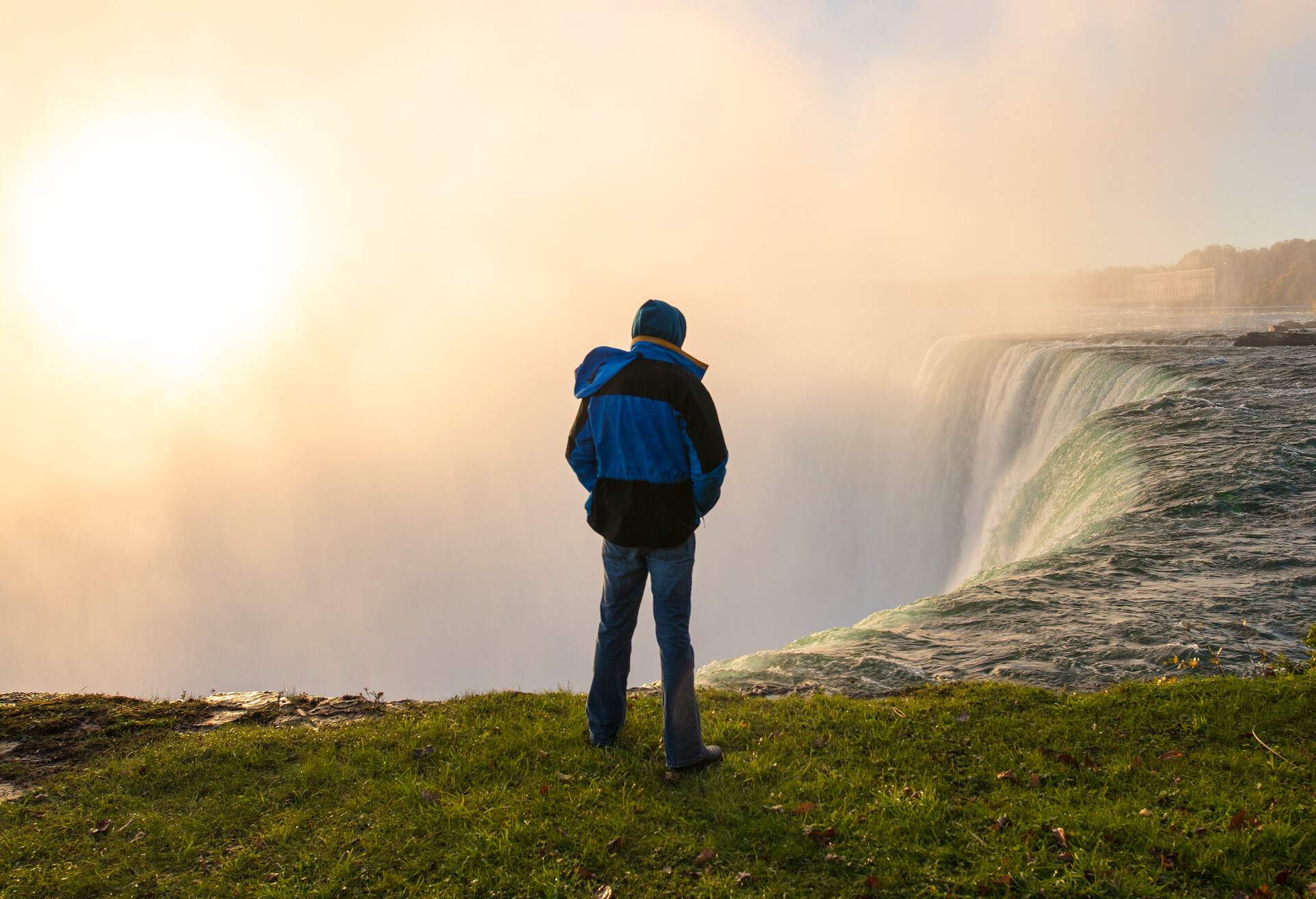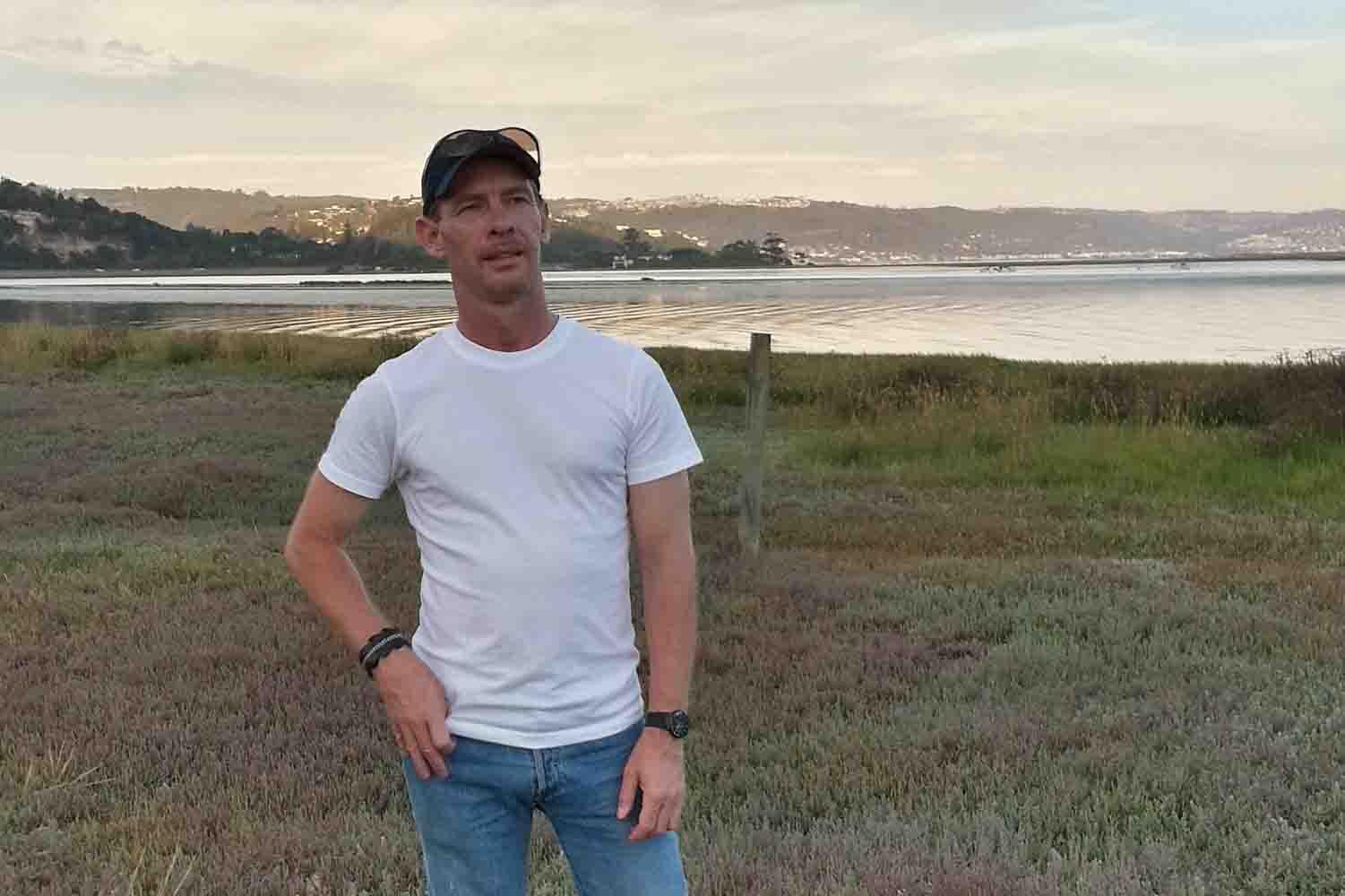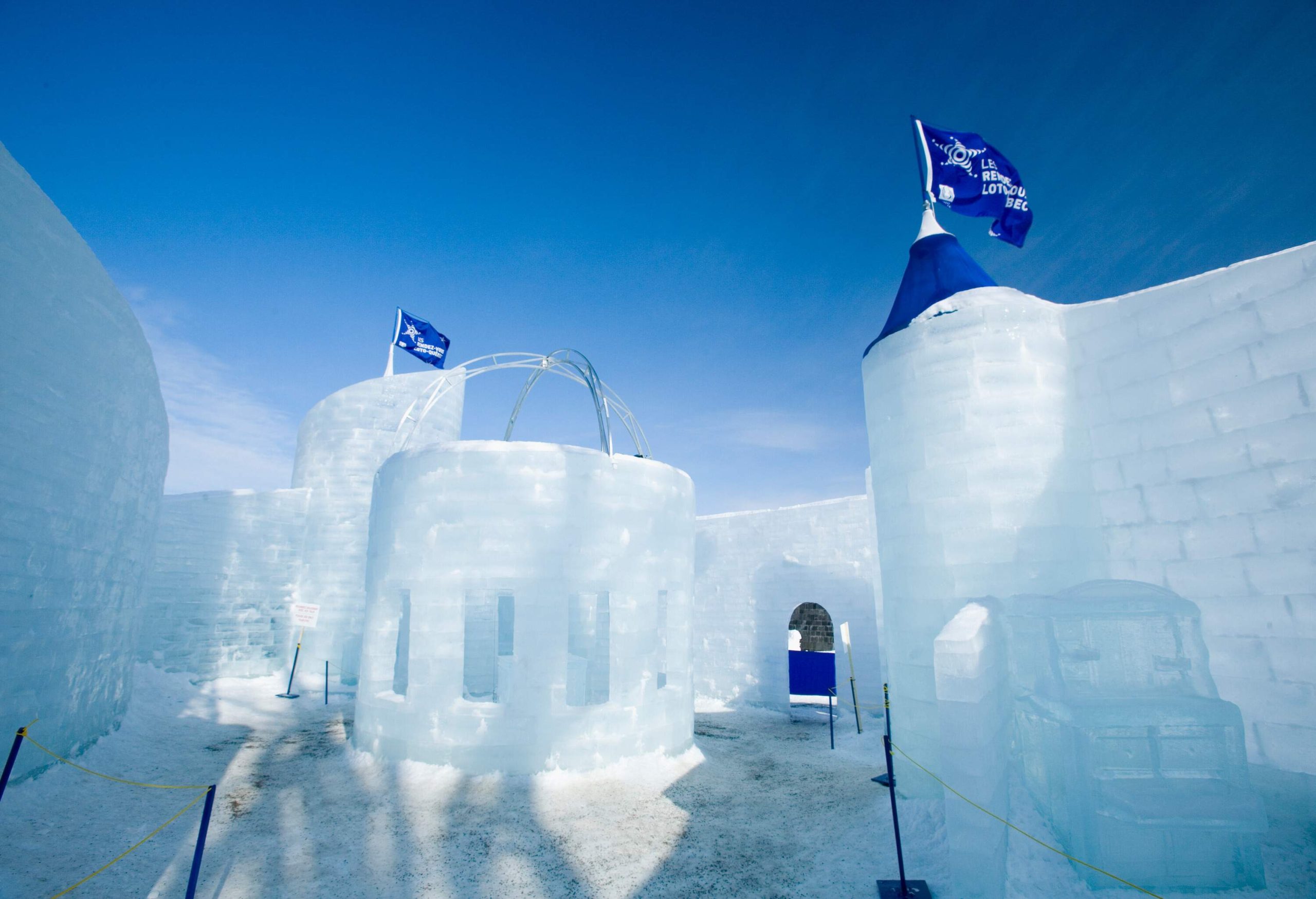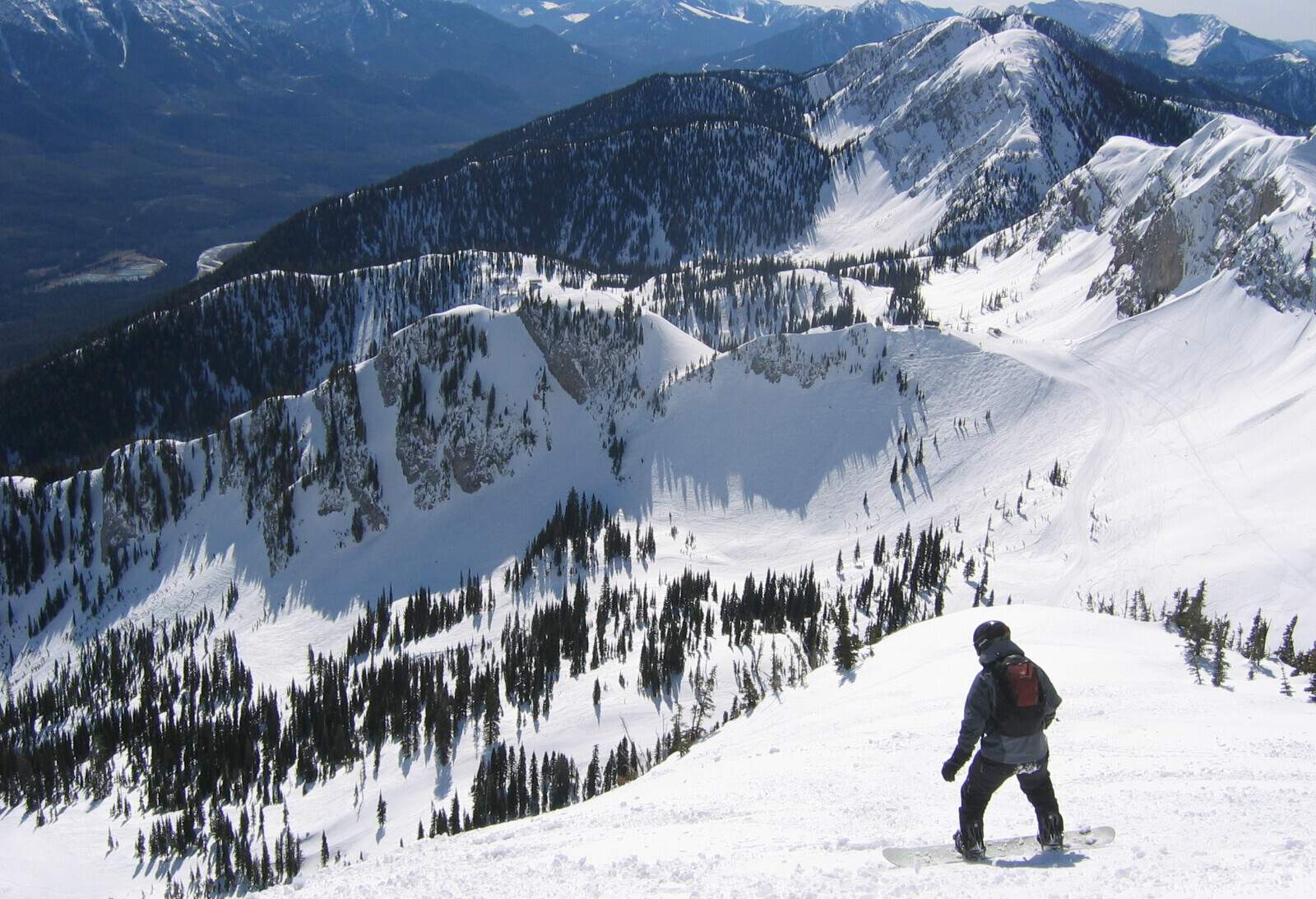There’s something about watching a waterfall that inspires a sense of awe. Up close, one can’t help but marvel at the sheer power of the water rushing past as gravity turns even a smallish river into one of nature’s great spectacles. If you’re close enough, you can feel the spray on your face and the rush of air as the water plummets down a sheer cliff. And you couldn’t wish for a better place to experience this than treating by yourself to a tour of the waterfalls in Canada.
There’s an over-abundance of Canadian waterfalls, each with its own character and claim to fame. Many remain unnamed, such is the quantity, but to give you a sense of how many there are, roughly 1,700 have already been named. Some are renowned for their vast height, and others are known for the sheer amount of water that pours down. Some are world-famous, others more obscure, requiring a bit of a hike rather than merely seeing them from your car or in designated tourist viewing spots.
Niagara Falls in Canada
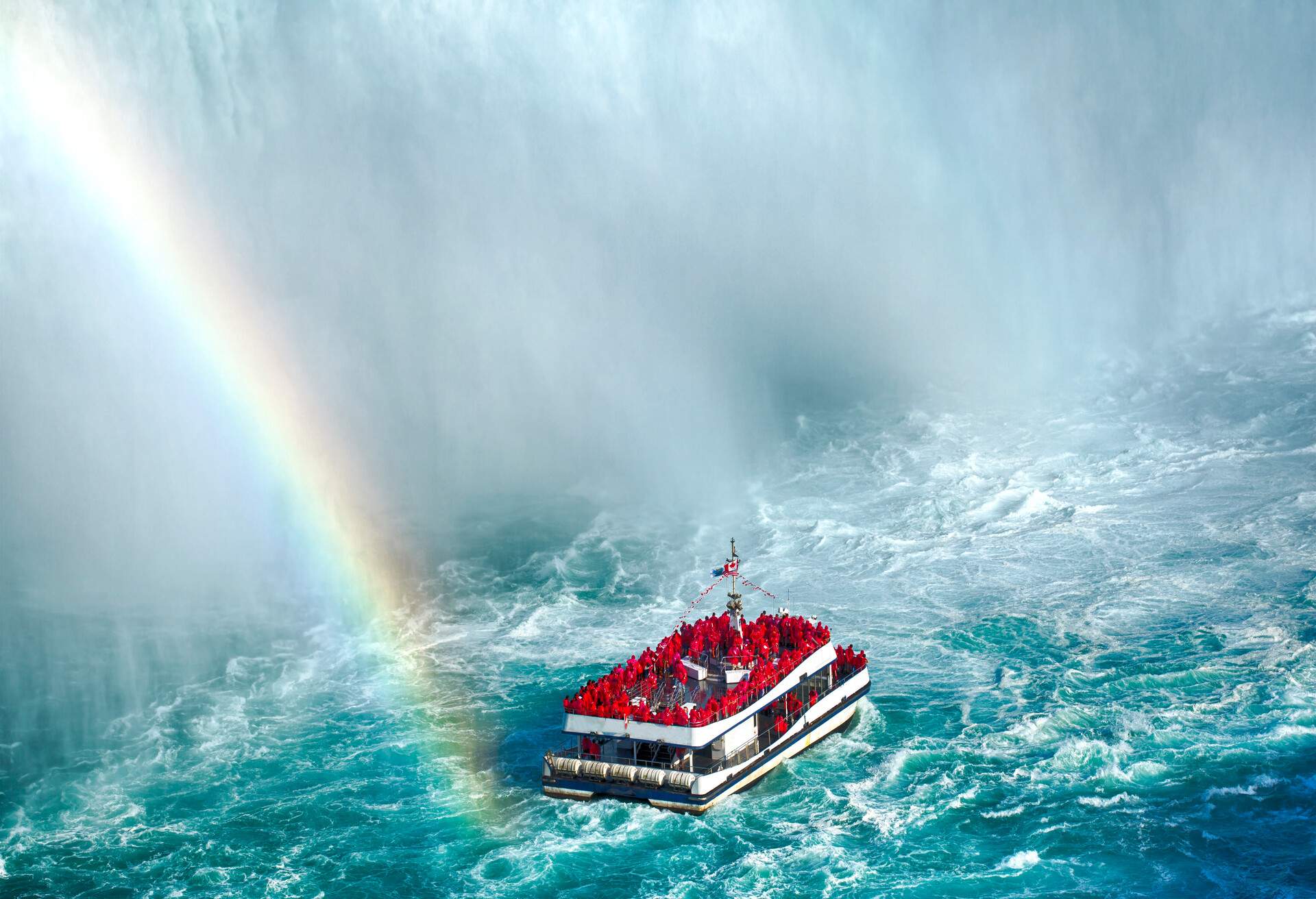
Niagara Falls remains the most famous Canadian waterfall. It attracts hundreds of thousands of visitors from around the world each year. The falls are about 12,000 years old, formed by melting ice at the end of the Earth’s last Ice Age.
Canada’s widest waterfall
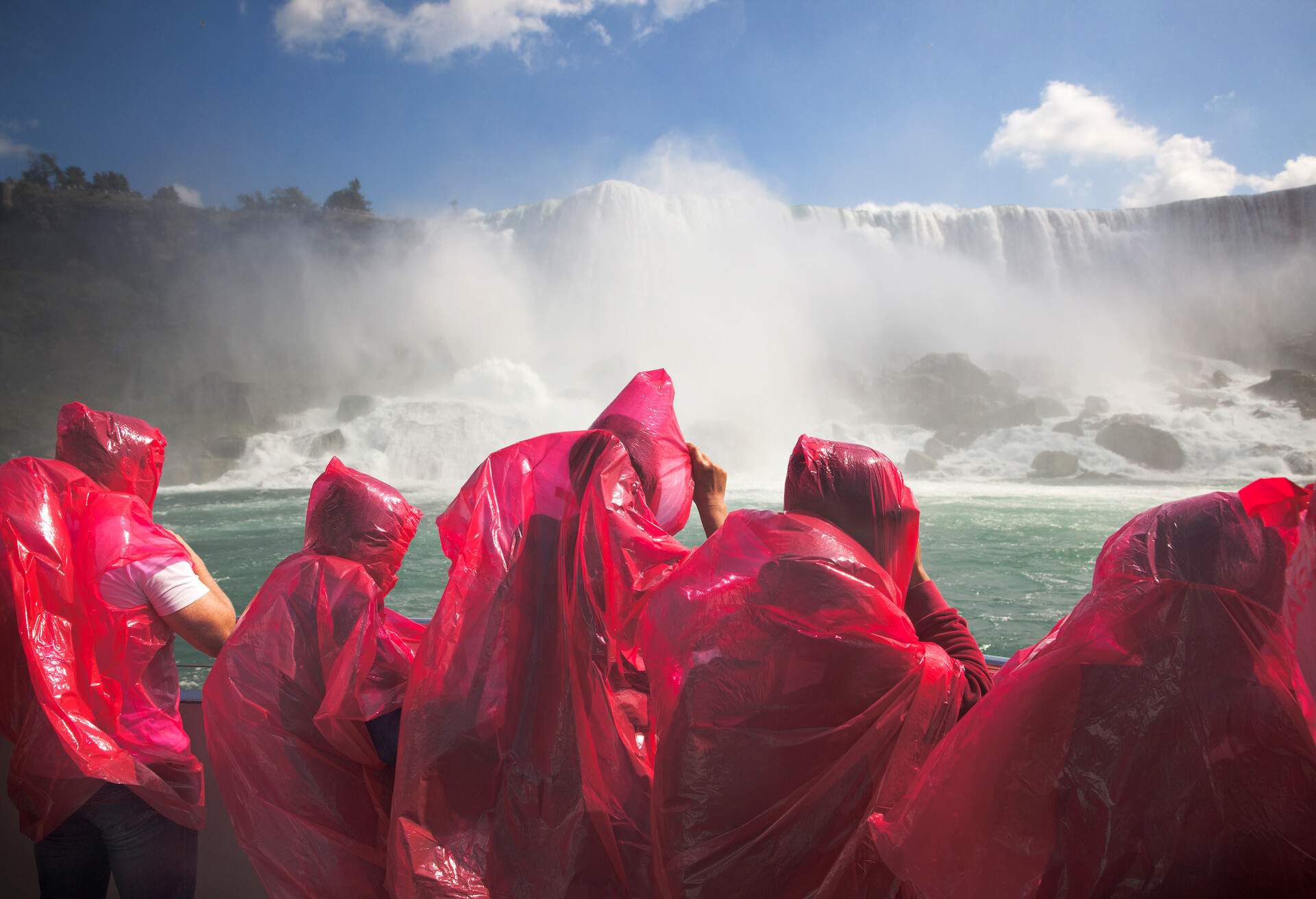
Niagara Falls isn’t the tallest of the waterfalls in Canada by a long stretch. It’s only about 50 metres (about 165 feet) high. What makes it such a popular tourist attraction is its unusual half-moon shape that creates vast width and an incredible volume of falling water. It’s also a full-blown tourist destination with plenty of side-show attractions that offer lots of other things to do at Niagara Falls.
Niagara Falls technically comprises three waterfalls that reach a confluence at this point. It also straddles the border between Canada and the USA. From your vantage point on the Canadian side, just south of Toronto, you’ll see the Horseshoe Falls, while those in New York State see the American Falls aspect of this great tourist attraction. Horseshoe Falls is about 790 metres (2,500 feet) wide.
Niagara Falls has grown into a tourist town in its own right, thanks to the droves of visitors. There are souvenir shops, restaurants, and even hotels on the site. The souvenirs are a little on the mass-produced side, but they make great mementos for your visit. Or you could just stand at the railings and be mesmerised by the waterfall.
You can get a lot closer if you like, too. There’s a lift you can take to a tunnel that brings you out into a cavern behind the waterfall’s curtain. This is probably the best experience on offer here. If you’re feeling braver, there’s a zipline alongside the falls that provides a different perspective of them, or you can hop onto a tourist cruise boat at the base of Niagara Falls.
Della Falls
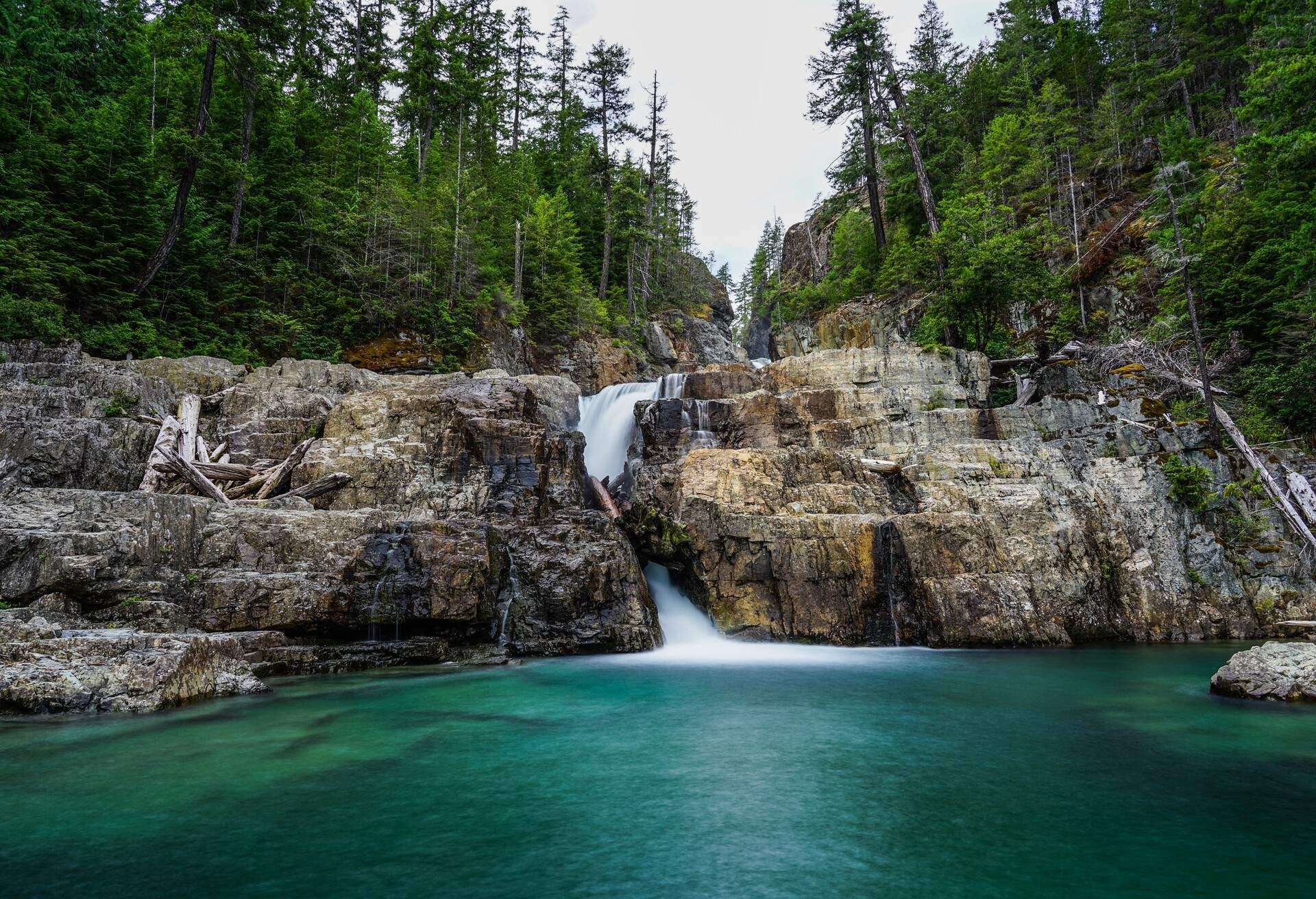
Della Falls is on Vancouver Island, just off the coast of its namesake city in British Columbia. It takes a bit of effort to get there, but it’s very well worth it for a few reasons.
The tallest of the waterfalls in Canada
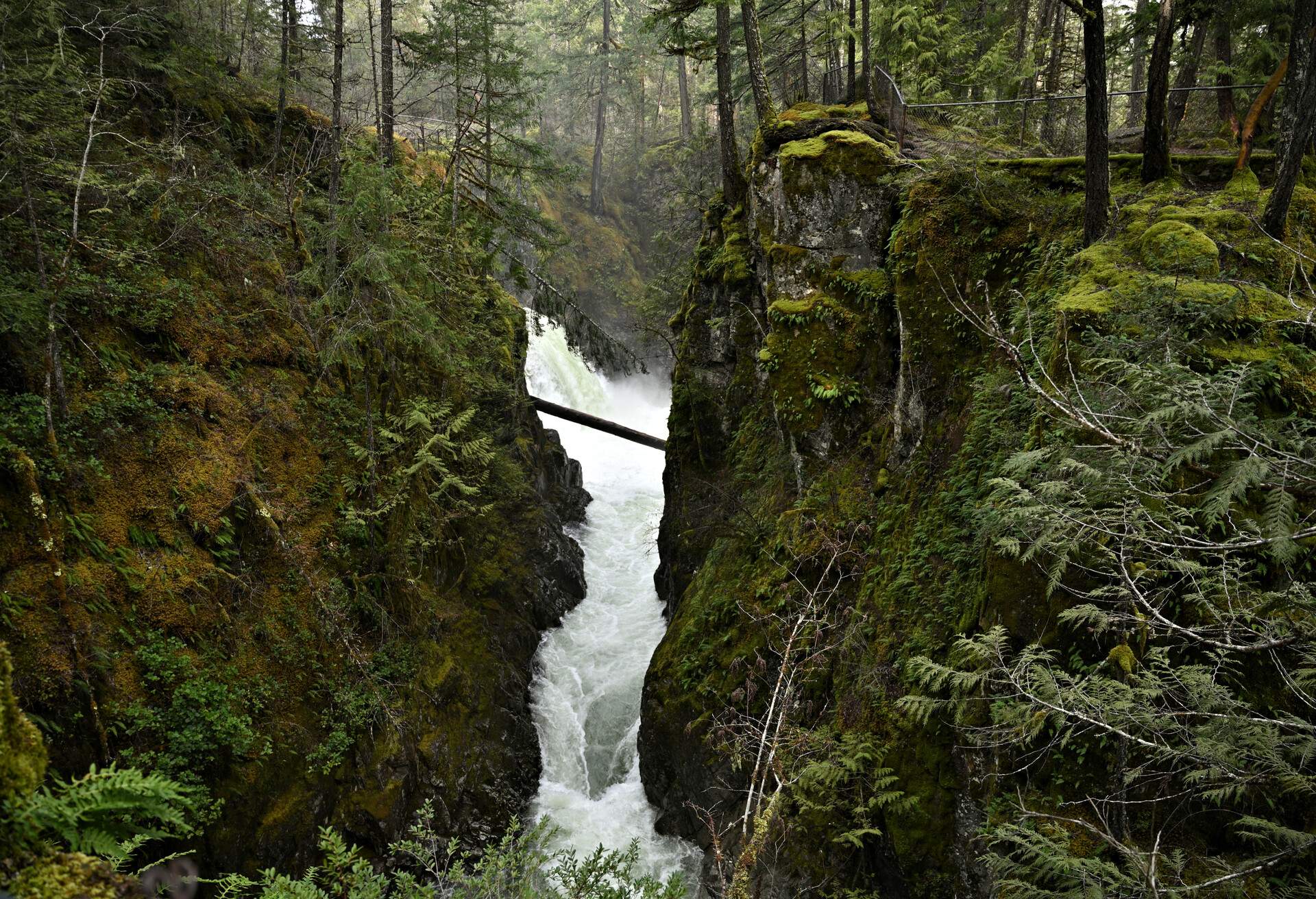
While Niagara Falls gets all the glory when it comes to international fame, Della Falls absolutely dwarfs it when it comes to height. At a daunting 440 metres (about 1,550 feet) tall, this is the highest waterfall in the country. The best time to visit is in July, which is mid-summer in Canada when the snow and glacier ice have melted and the falls are at their best for water volume. It’s also an easier time to cross to Vancouver Island from Vancouver city.
Once you’ve landed on Vancouver Island, there are two ways to get to Della Falls. There’s the straightforward way, which is to hike the roughly 29 km (18 miles). It’s recommended that you’re an experienced hiker to tackle the trail, though. It takes about 3 days to complete, so this is a hike that you need to plan ahead for.
The other way to reach Della Falls is to go to Strathcona Provincial Park and head for the Great Central Lake. You then have to cross it. An easy way is to hire a water taxi. The more vigorous and interesting way of getting across is to hire a kayak or a canoe, which is also the cheaper option.
Takakkaw Falls
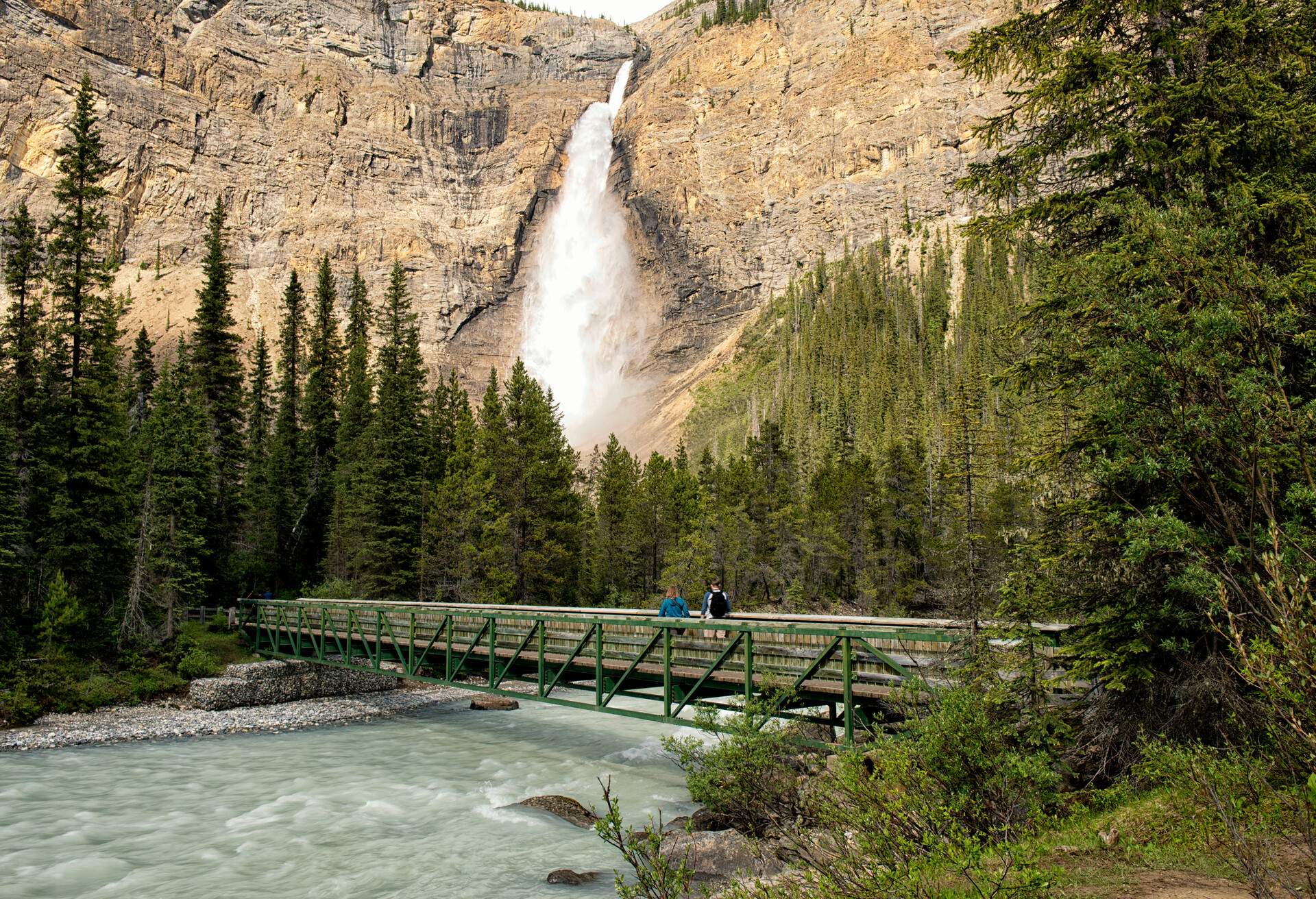
Takakkaw Falls comes in second on the list of the highest waterfalls in Canada, measuring around 300 metres (over 980 feet) tall. It’s also located in British Columbia, in the east of the province, in the Canadian Rockies.
Get close to the falls
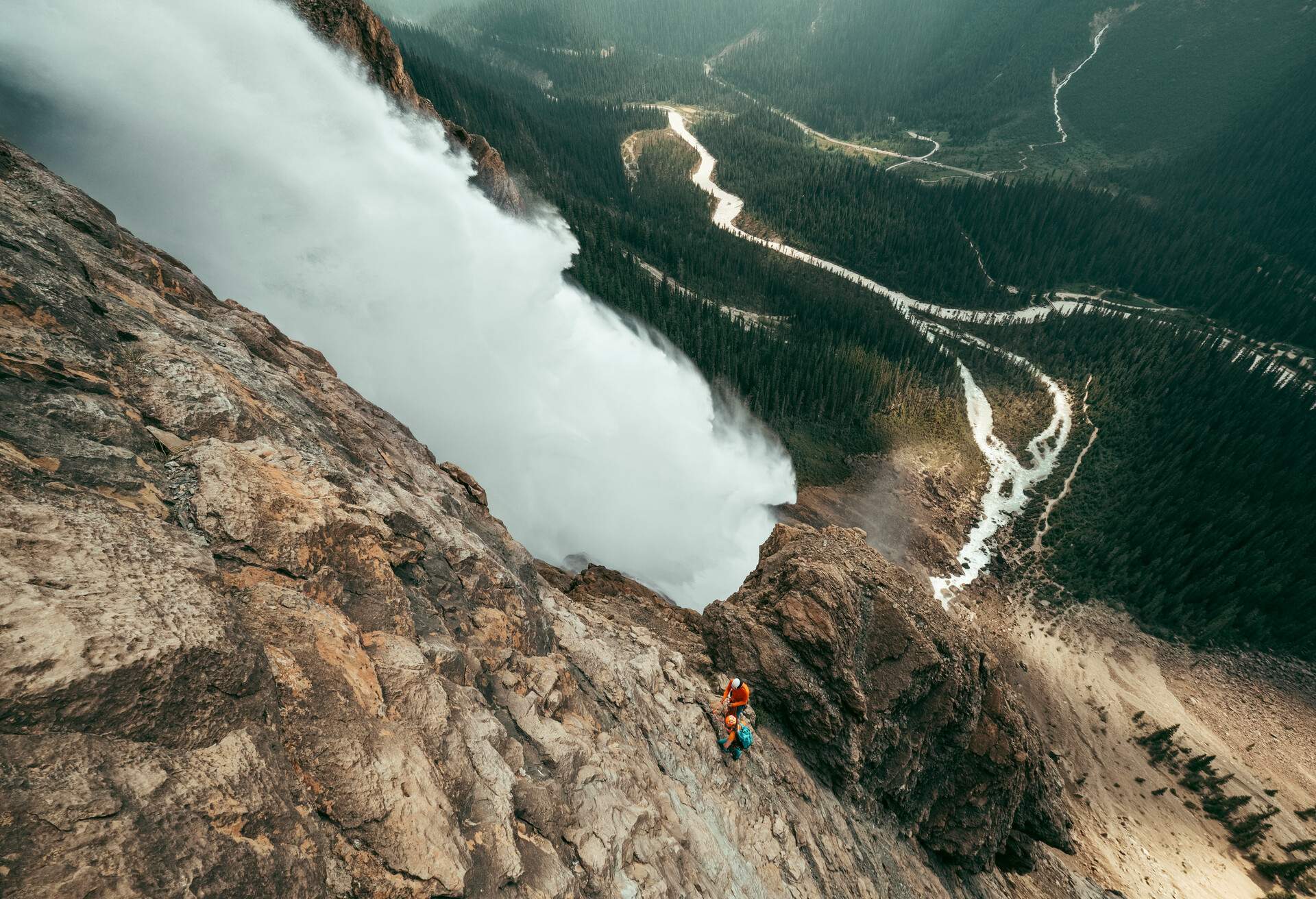
You’ll find Takakkaw Falls in Yoho National Park, making it far more easily accessible than Della Falls. To reach them, you merely have to walk a short way along a paved trail. The best time to visit Takakkaw Fall is in April or May when the melting snow and glacier ice create the strongest water flow. You can get close enough to stand in the mist given off by the rush of water.
Pissing Mare Falls
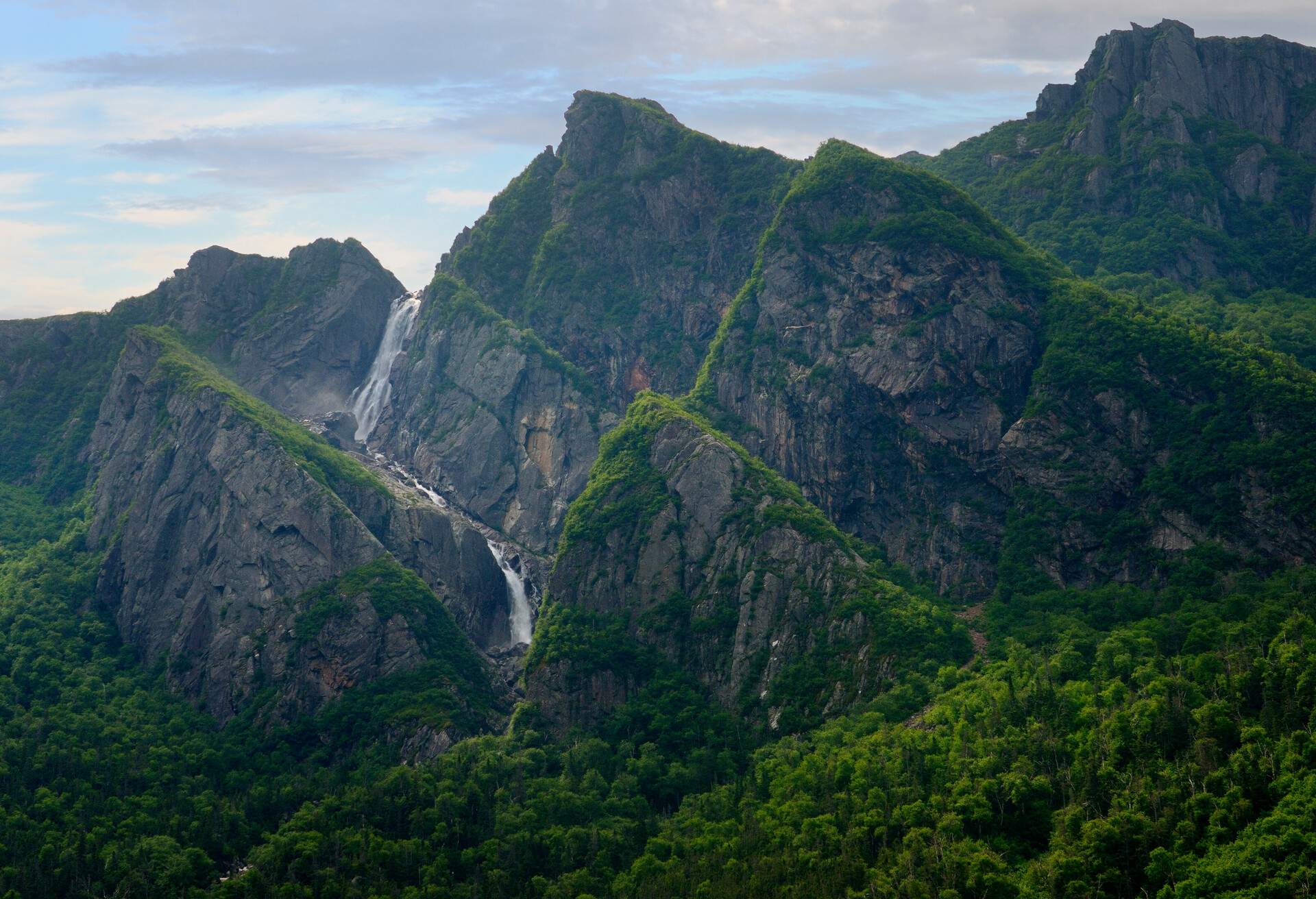
Perhaps one of the more colourfully named waterfalls in Canada, Pissing Mare Falls is also one of the prettiest in the country. It’s in Newfoundland, in Gros Morne National Park.
Worth the effort to see
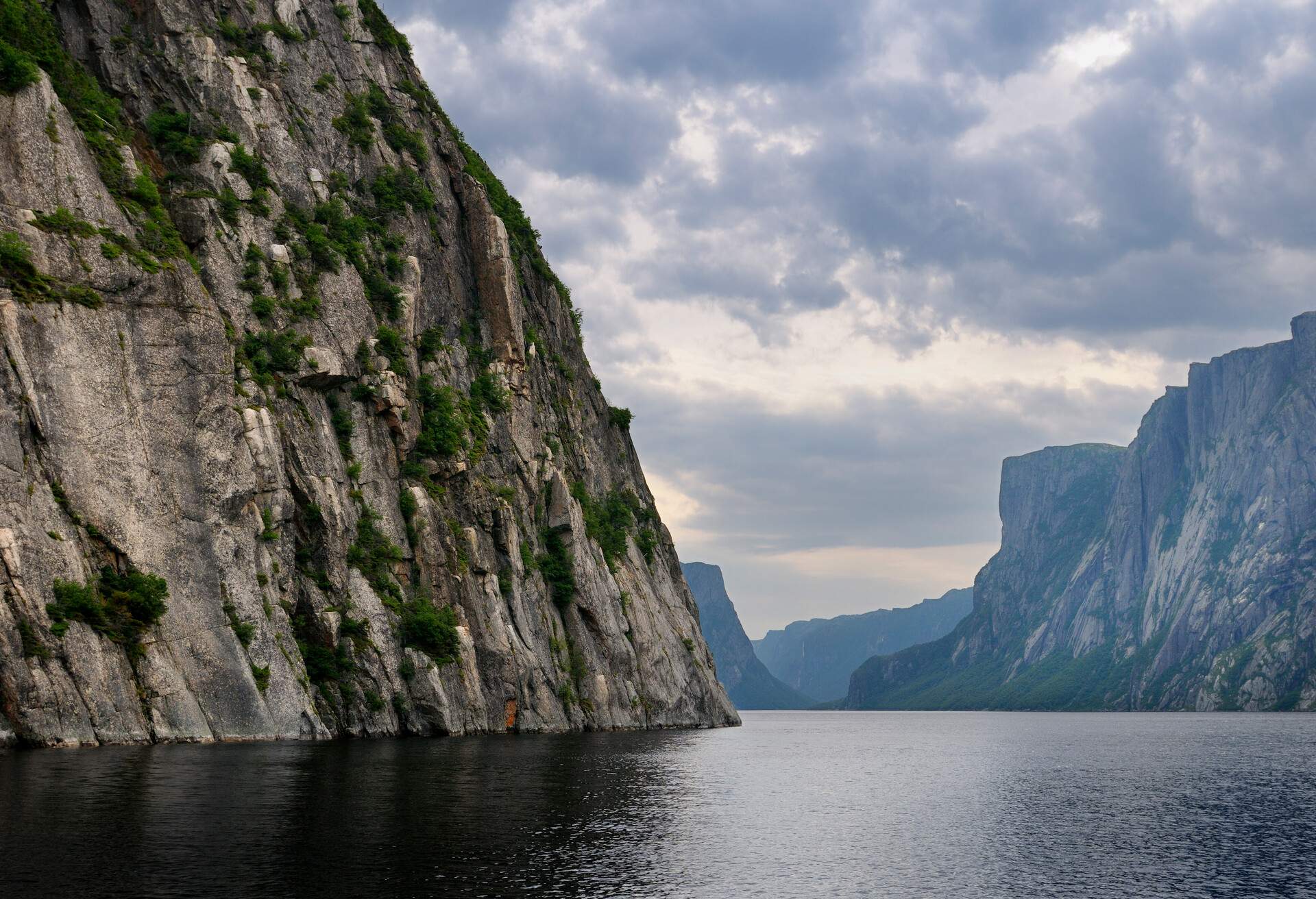
While Pissing Mare Falls might not be the easiest to access, you won’t regret the effort. In spring, when the falls are best viewed, you can book a boat trip along the Western Brook Pond fjord, which is a very picturesque way of getting there. That being said, to reach the boat cast-off point, you’ll need to hike for about 30min along a forest trail. At the end of it, though, you’ll be rewarded with one of Canada’s most iconic natural sights.
Helmcken Falls
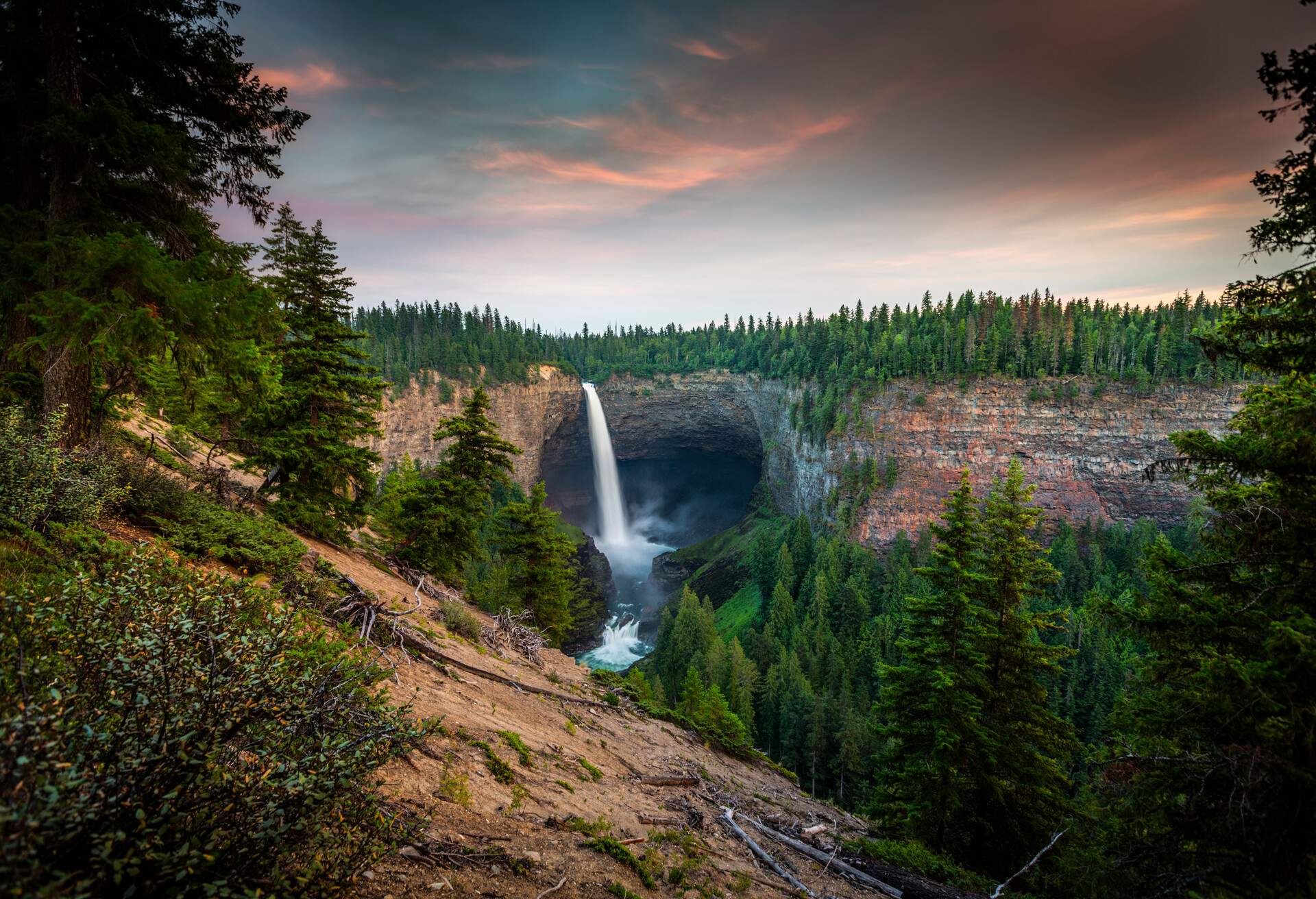
Helmcken Falls is another of the most picturesque waterfalls in Canada, situated in Wells Gray Provincial Park in British Columbia, about a 6-hour drive north from Vancouver, in the Cariboo Mountains.
A picture-perfect cascade
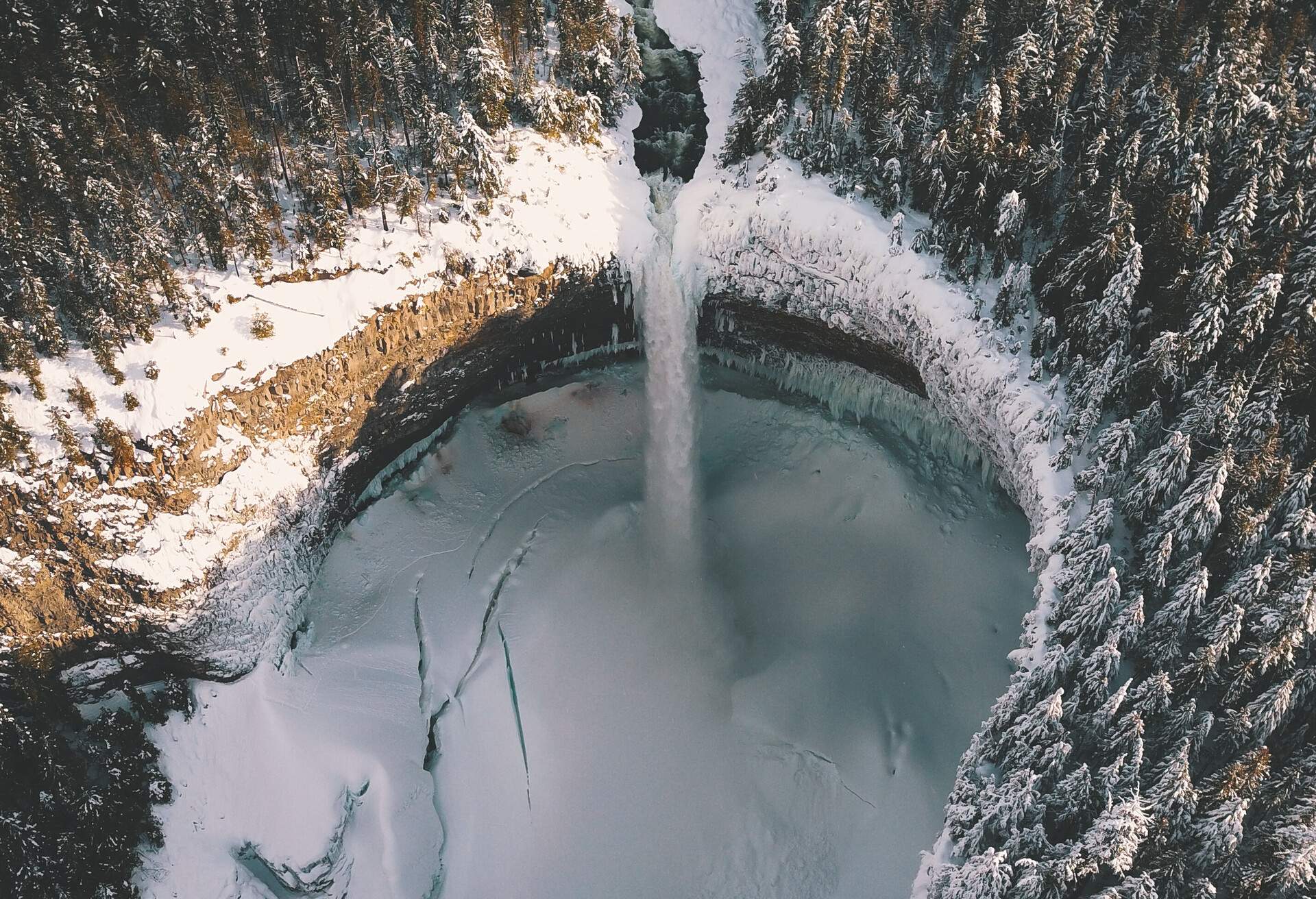
Helmcken Falls gets its tourist appeal from the wonderful view it presents from the top, as the water cascades into a gorge hollowed out from the cliff face. It has good tourist facilities, so you only need to park and walk a short way to the viewing platform. It’s a waterfall you can happily visit in winter when it turns into a wonderful natural phenomenon. You can watch fast-flowing water pouring into what looks like an ice cone below.
There’s a great, affordable hotel conveniently close by; book overnight at Wells Gray Inn. Or stay for a little longer if you also want to hike the Rim Trail that ends up on the other side of the falls to the viewing platform. It’s only about 8 km (around 5 miles) long and the gradient is pretty gentle.
Virginia Falls
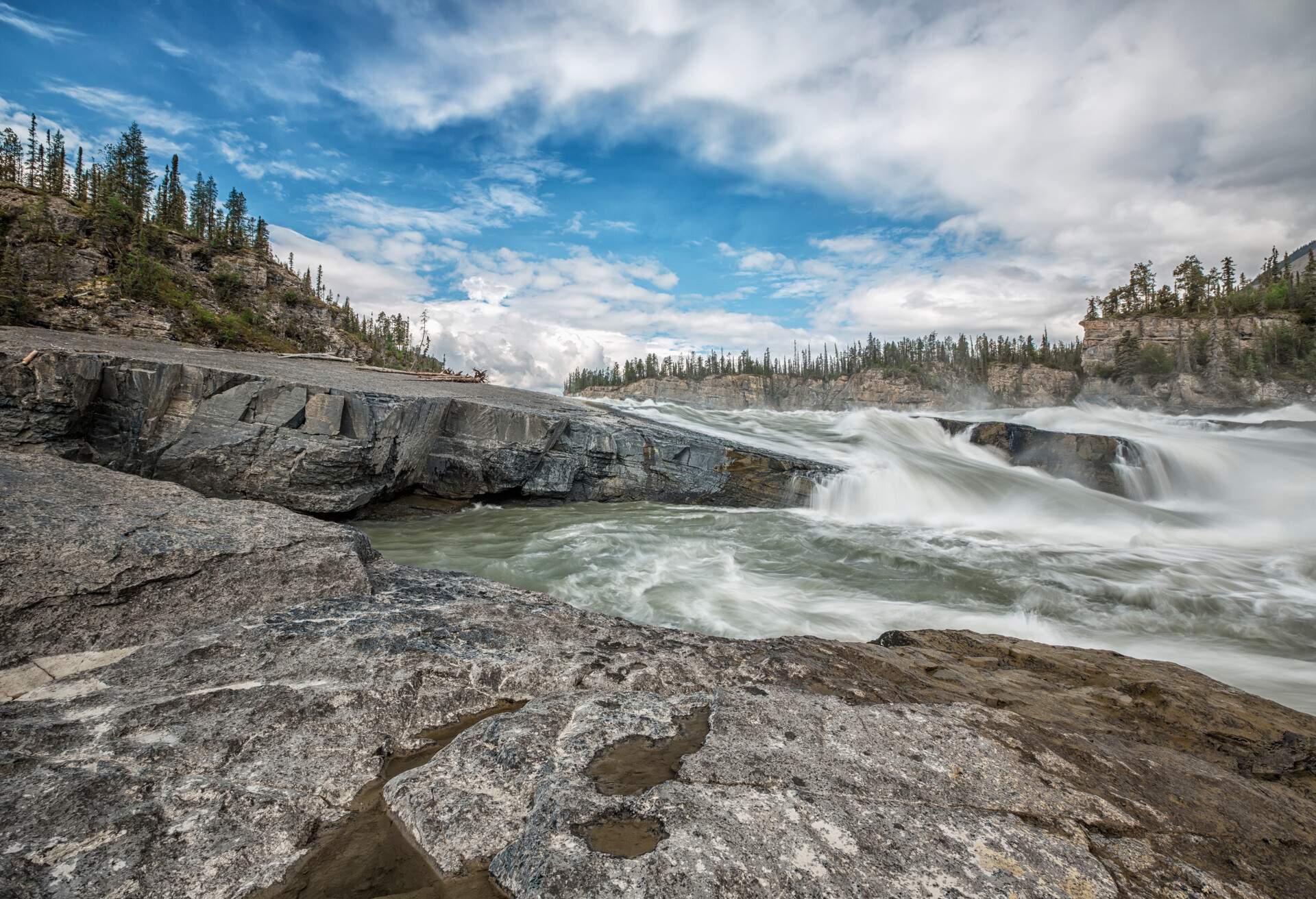
Virginia Falls is one of the more remote Canadian waterfalls and also one of its most spectacular. It’s located in the frigid Northern Territories, in Nahanni National Park Reserve. To get there, you can fly to Yellowknife, hire a car and then drive about 500 km (about 310 miles) to the west.
Getting the best view of Virginia Falls
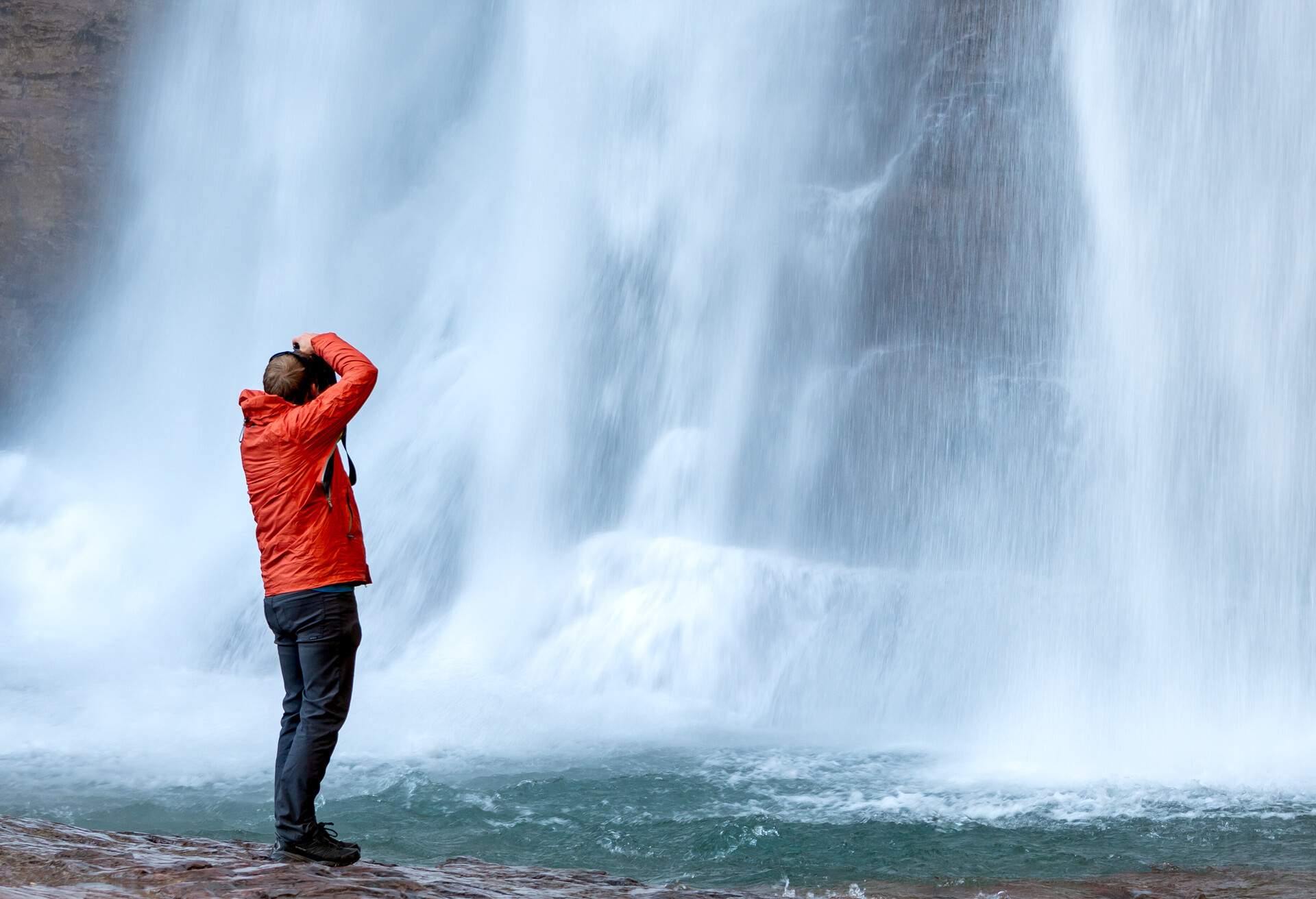
Once you’ve arrived at Nahanni National park, there are a couple of ways to get to Virginia Falls. Both are somewhat unusual. They’re another reason why visiting these falls is a great holiday idea for the adventurous traveller who wants something out of the ordinary. You can view the falls from the bottom or from high above.
Virginia Falls is double the height of Niagara Falls. If you’re up for it, you can get an up-close sense of its height by padding up the Nahanni River in a canoe or a kayak. If you don’t feel like expending so much energy on holiday, you can take a tour on a float plane flight. Seeing the falls from the air is a memorable experience.
Montmorency Falls
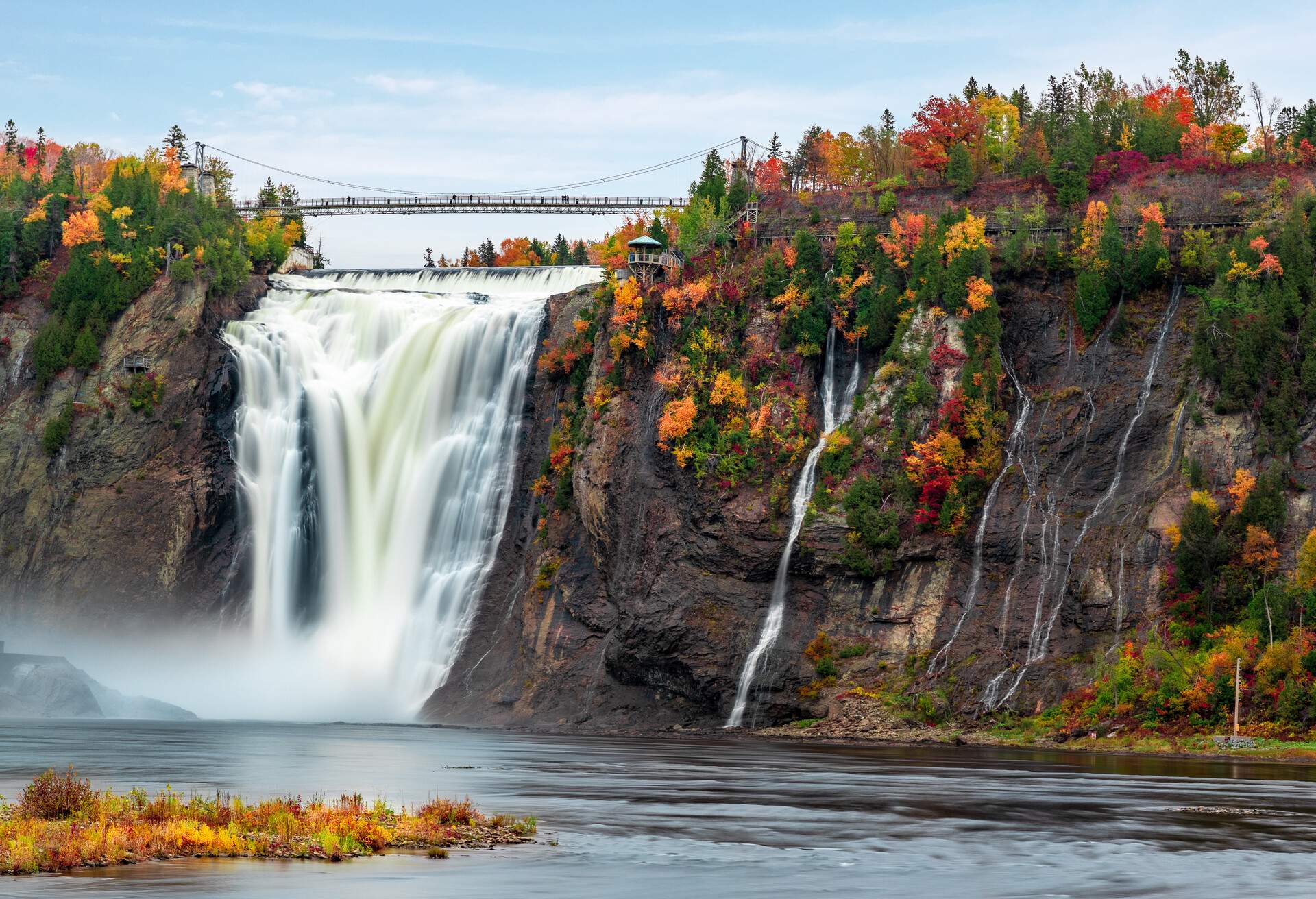
Montmorency Falls, known locally as Chute-Montmorency, is in the French-Canadian province of Quebec. It’s at this drop-off where the Montmorency River that feeds the falls joins the mighty Saint Lawrence River below.
Easy access and fun activities
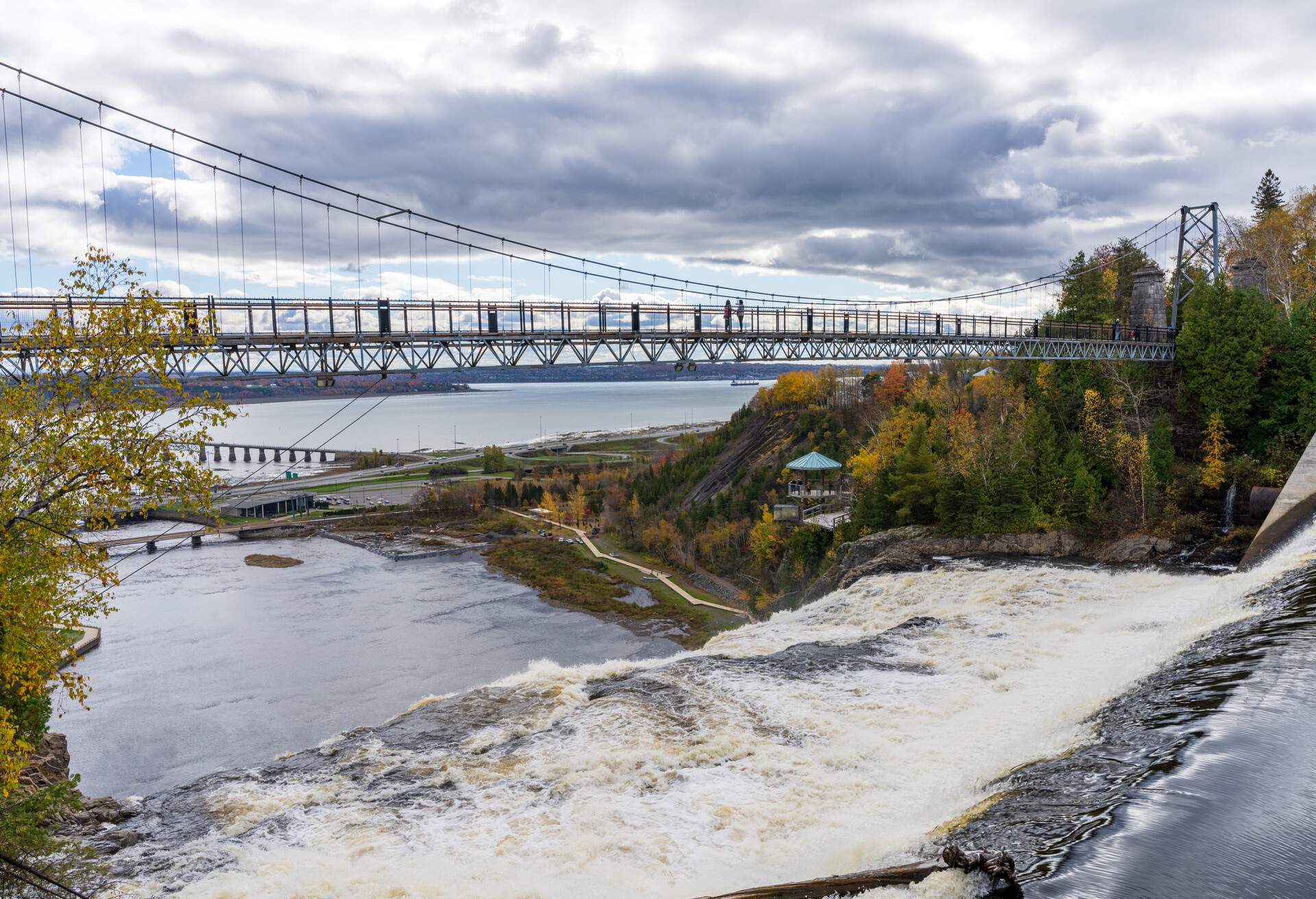
This is one of the easiest of the waterfalls in Canada to access as a casual tourist who doesn’t want to do a whole lot of cross-country hiking or kayaking. You merely have to take a wooden staircase that winds up the falls. Stop at the viewpoints on the way to get a different perspective as you ascend. Once you’re at the top, you can also walk across a suspension bridge spanning the waterfall.
If you prefer a more leisurely approach, you can take a cable car from the bottom of the waterfall to the top. More adventurous activities include going on a zipline alongside the waterfall or using a “via ferrata” to get to the top (a protected climbing route). If ever you’ve wanted to get really close to a large waterfall, this is your chance. Montmorency Falls is about 83 metres (270 feet) high.
Kakabeka Falls
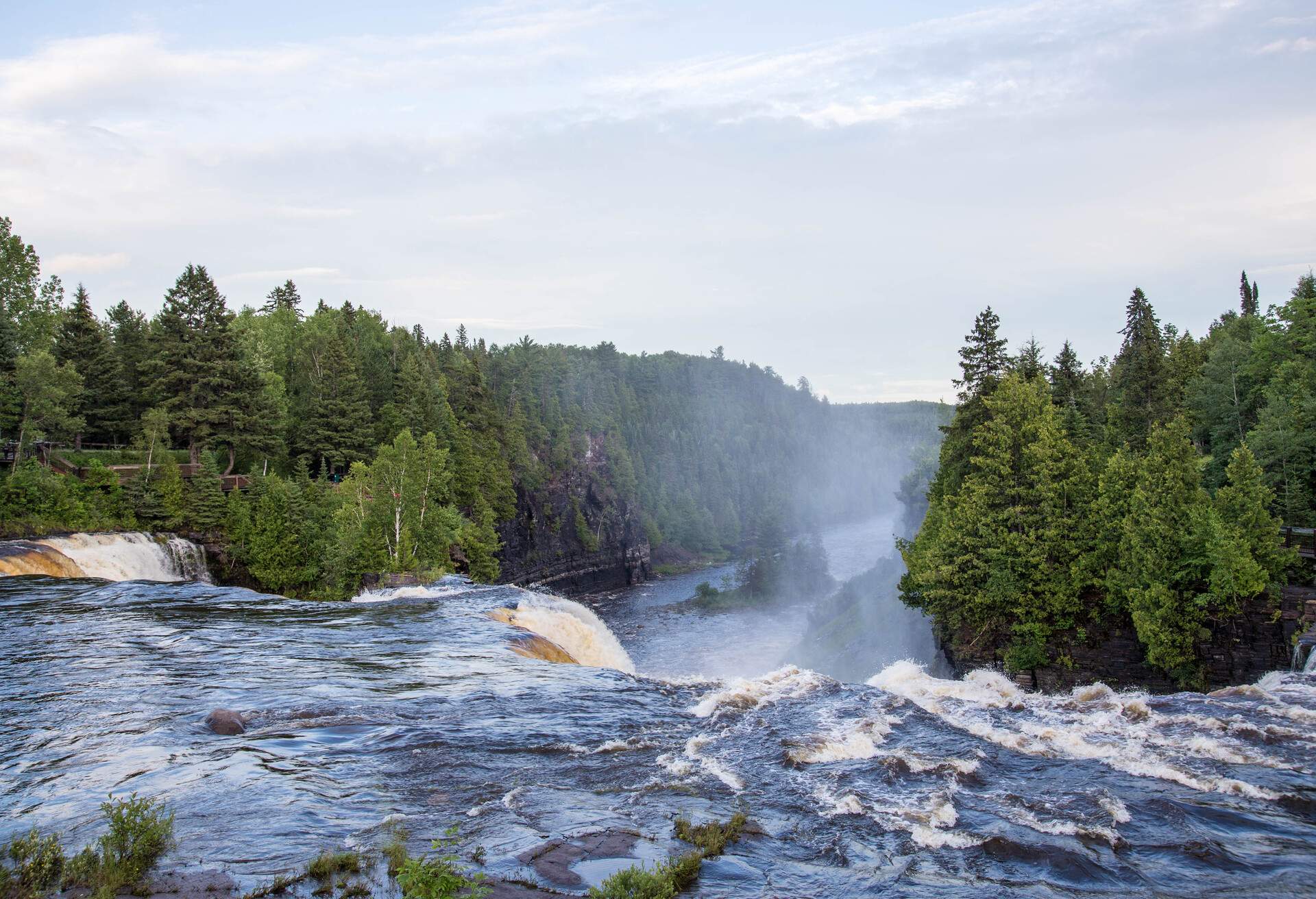
Kakabeka Falls is in Kakabeka Falls Provincial Park. You’ll find this a little to the west of Thunder Bay, in the Canadian province of Ontario. It’s north of Niagara Falls, and the two enjoy a friendly rivalry when it comes to the favourite waterfall in the province among Canadians. Niagara Falls is much more developed and touristy, whereas Kakabeka Falls is a far more natural and unspoilt Canadian waterfall.
A thunderous display of falling water
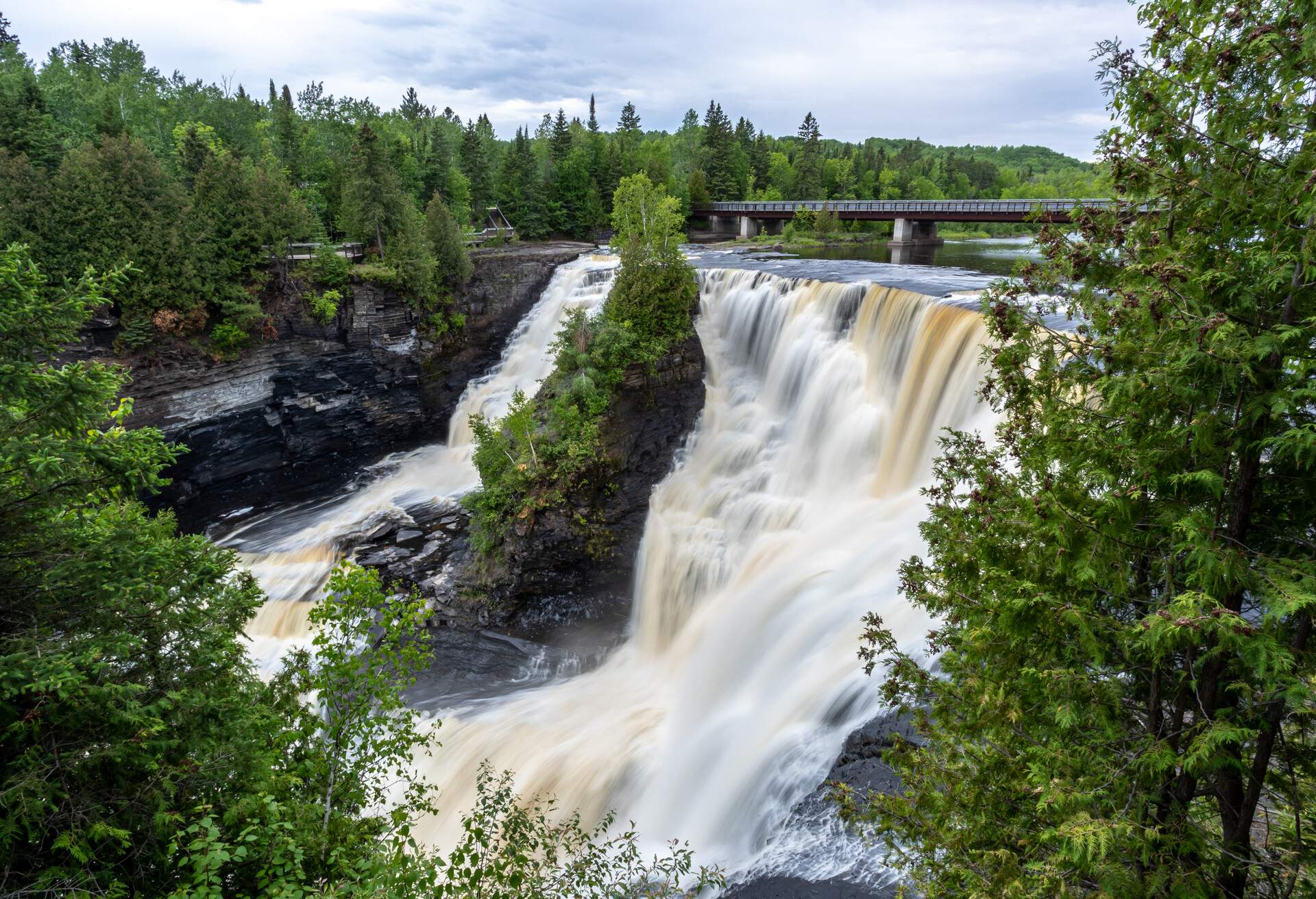
The biggest attraction of Kakabeka Falls is watching the huge amount of water that falls from a great height. It’s the second-highest waterfall in Ontario province, after Niagara Falls, at around 40 metres (130 feet) tall. Unsurprisingly, it’s been nicknamed the “Niagara of the North”, although many people far prefer it due to its more natural setting and lack of tourist traps.
You can easily get to Kakabeka Falls by road – it’s only a short walk from the motorway. You’ll follow a well-maintained boardwalk trail that winds its way to the top of the waterfall. Unfortunately, you can no longer take the lower walking trail, as it’s forbidden to go to the bottom of the falls. This is for ecological protection reasons, as the area is prone to erosion and is thus a sensitive ecological area of Canada.
Athabasca Falls
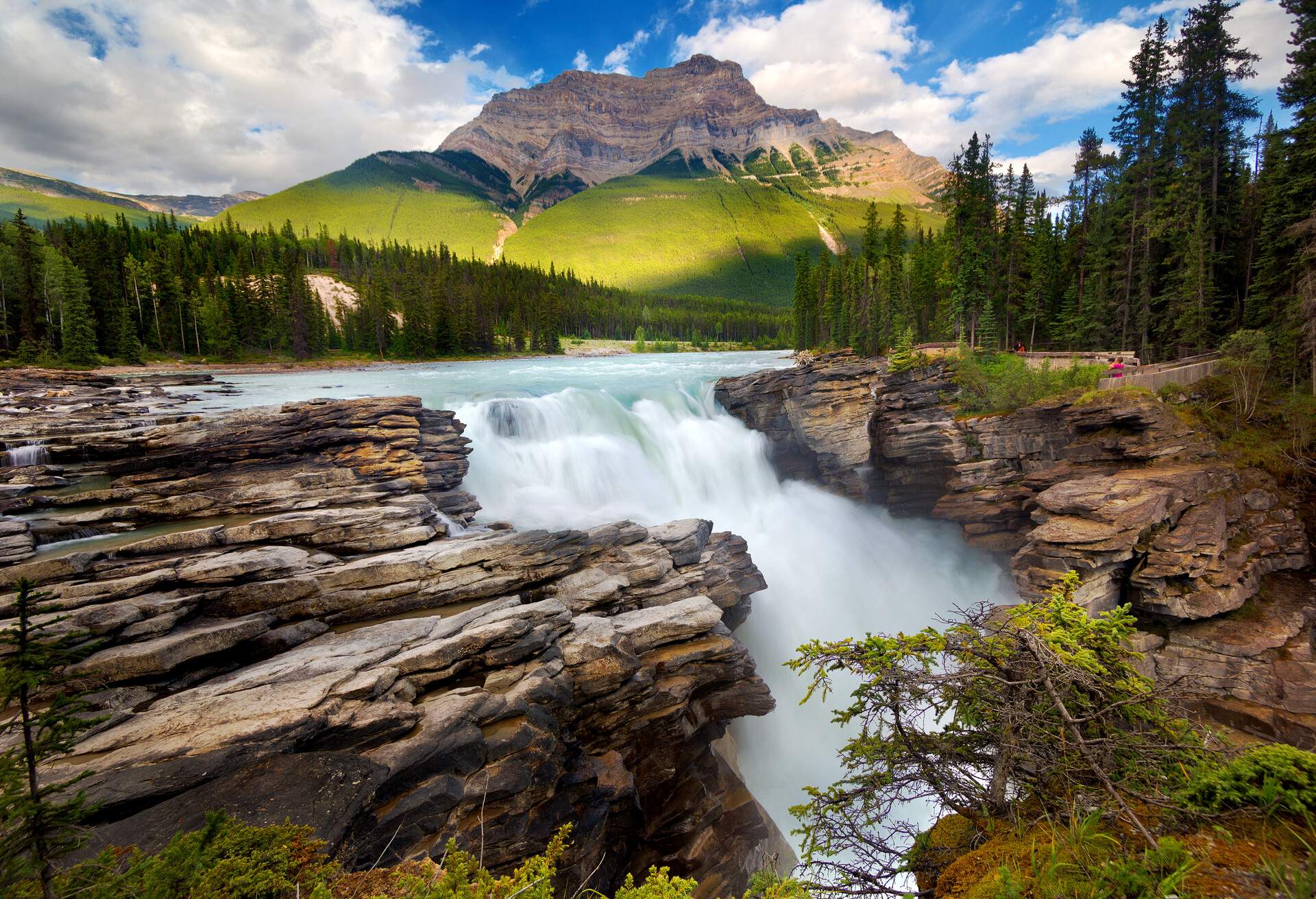
Head to Jasper National Park and you can see one of the most ethereal-looking waterfalls in Canada. Athabasca Falls isn’t very high, but it moves a seemingly impossible volume of water for its size. It really does make the most of its relatively low 23 metre (75 foot) height, and as a result, is a popular natural attraction with tourists.
A waterfall you can visit all year round
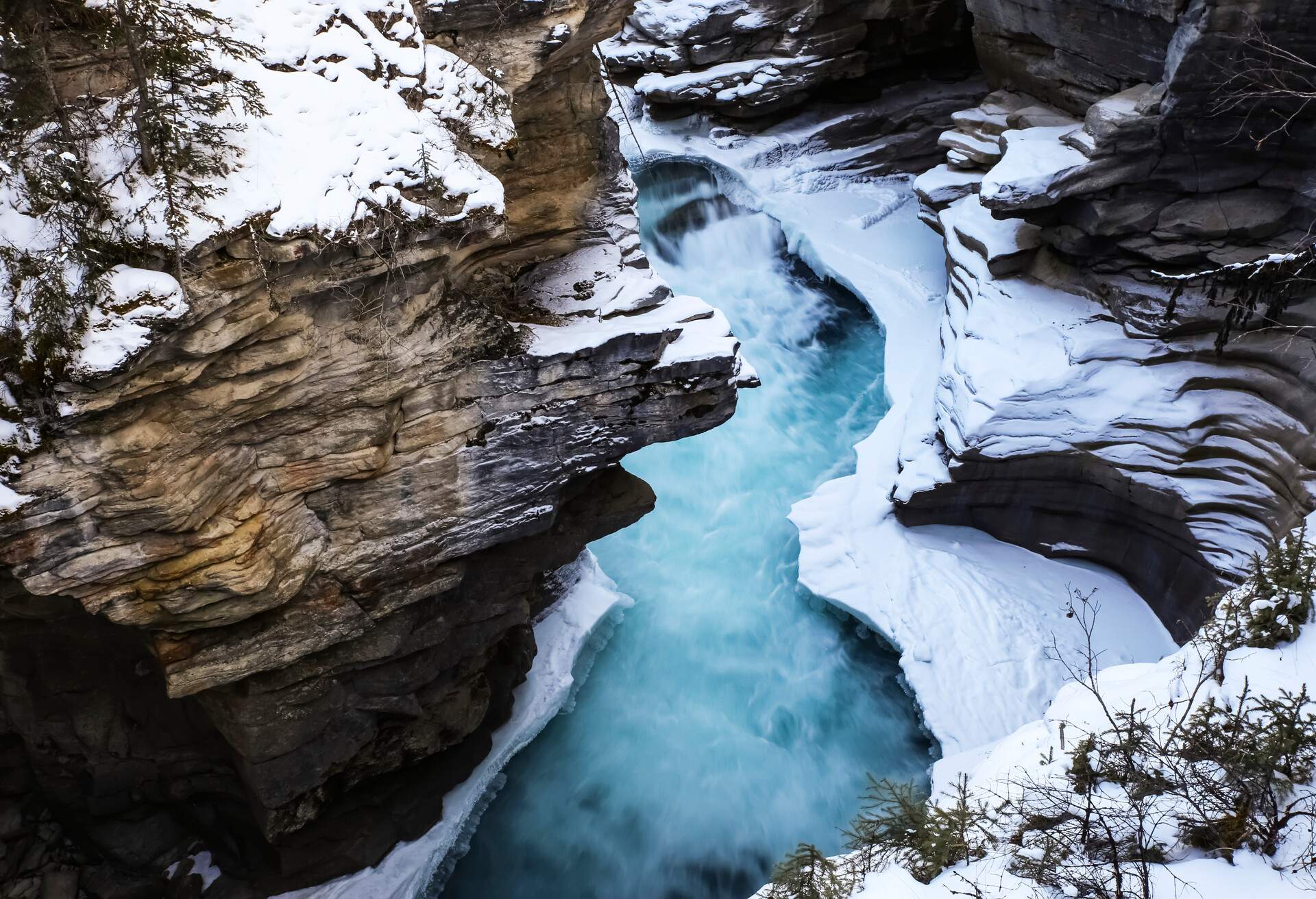
You have to wait for spring to get the most out of many of Canada’s waterfalls, but that’s not true of Athabasca Falls. It’s fed by the particularly wide Athabasca River, so there’s a constantly strong and large volume of water that flows over it. This makes it equally impressive no matter when you visit. It’s a year-round attraction for waterfall lovers.
It’s very easy to reach Athabasca Falls. Once you’ve parked, you only have to follow a short trail. This is paved, so it’s easy going underfoot. The only drawback is that it can get a bit crowded during the summer months, so try and visit during other times of the year when it’s much quieter.
Shannon Falls
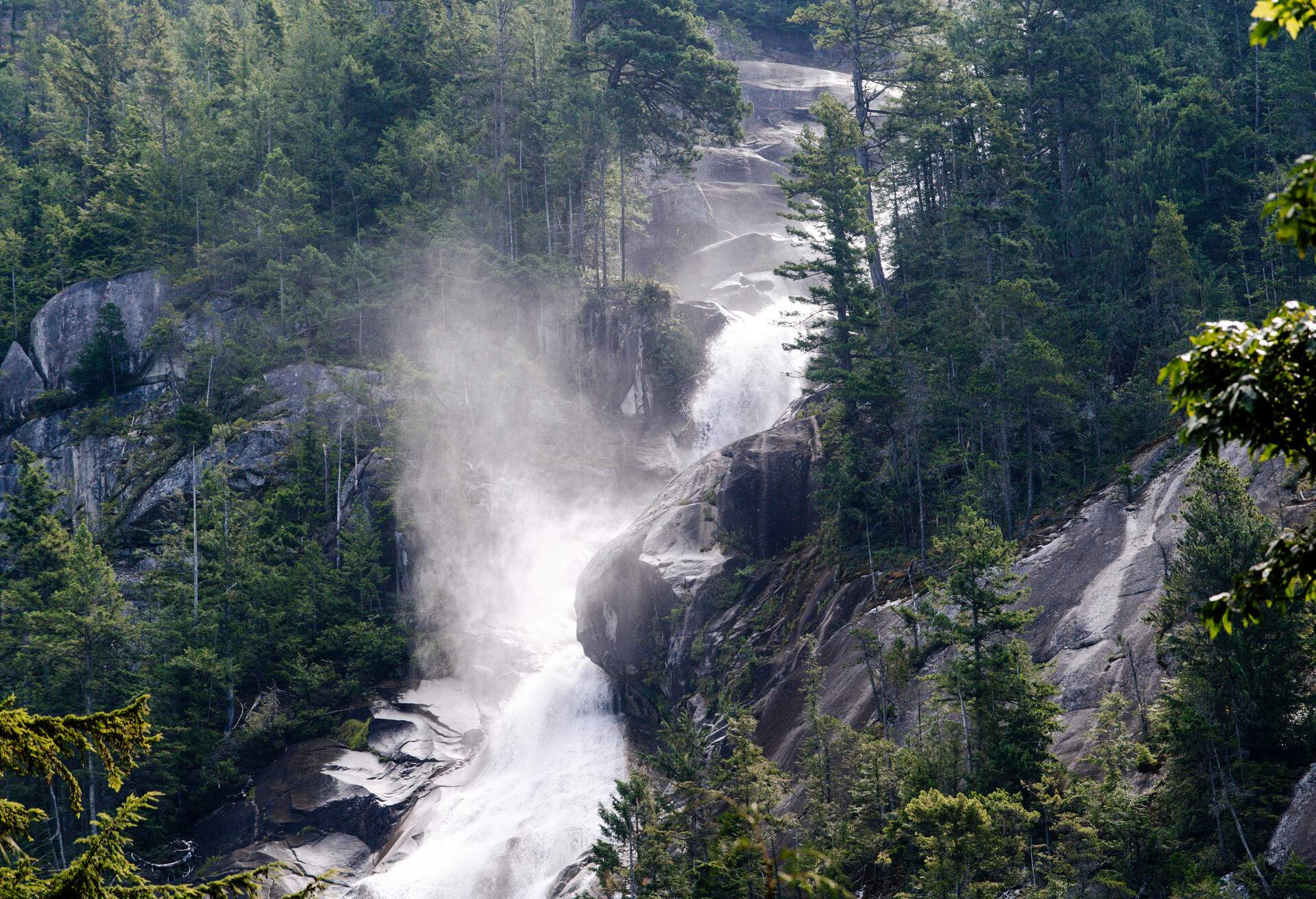
Yet another of the waterfalls in Canada that you’ll find in the western province of British Columbia, going to Shannon Falls makes a great day trip from Vancouver.
A memorable multi-level waterfall
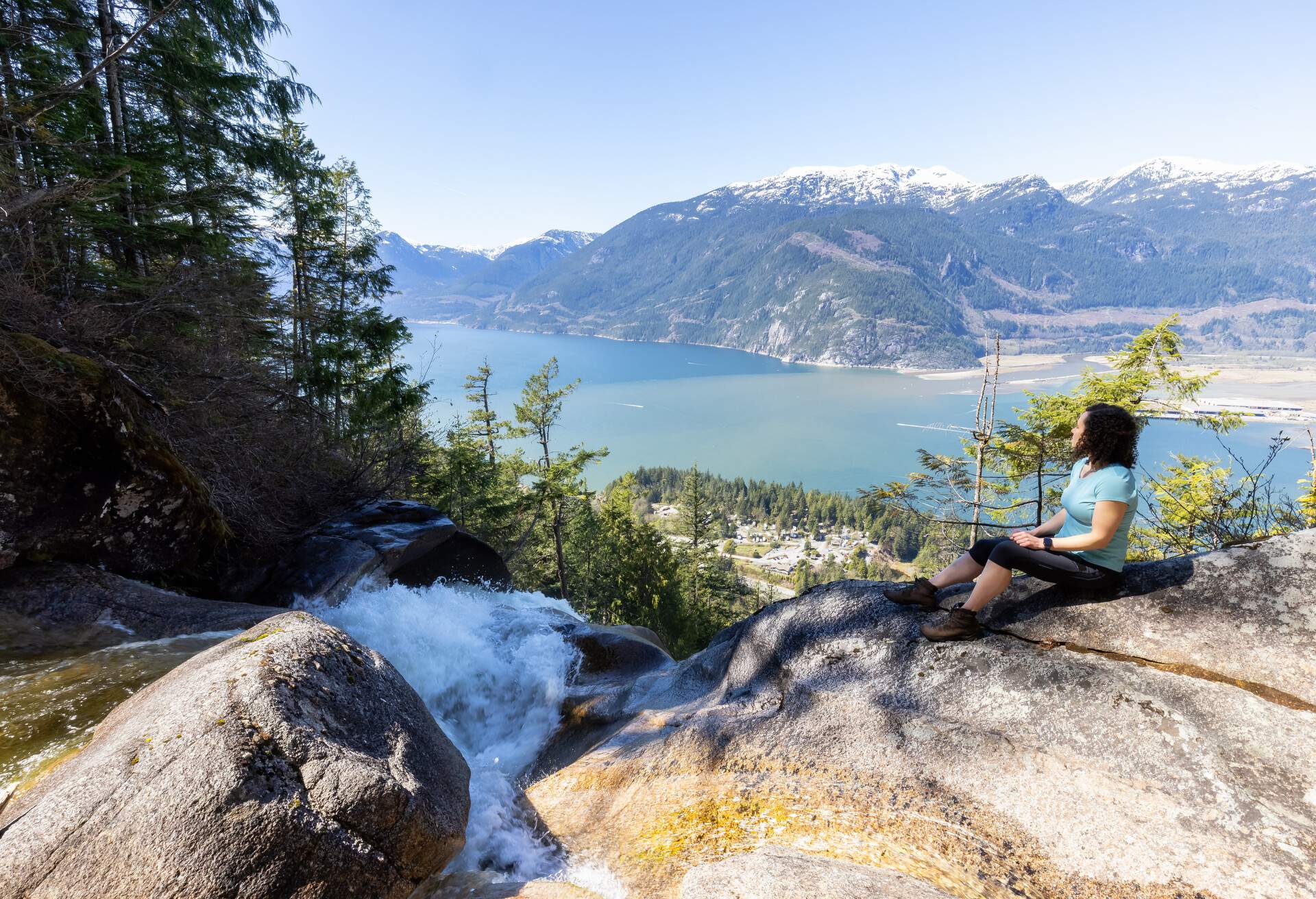
The distinctive factor of Shannon Falls is that you can experience it from three different levels. This is possible due to its impressive height, at 335 metres (over 1,000 feet). Level one, as it were, is to drive up the Sea to Sky Highway that runs from Vancouver to Whistler. As you approach the town of Squamish, you’ll get a panoramic view of the whole of Shannon Falls.
To visit the falls themselves, enter Shannon Falls Provincial Park. Park and take the boardwalk to see the falls from its viewing points. You can also wander along other trails, where you’ll find rustic wooden picnic tables alongside the falls. This is a wonderful way to experience the natural surroundings.
The third level is the most challenging – a full-blown hike to the top of Shannon Falls. This involves some climbing, so it’s not for those who would be nervous about that. To compensate for the effort, you’ll have views of the falls that aren’t available in any other way. A word of warning too: the rock pools are notoriously treacherous, so resist the urge to jump in after the strenuous route there.
Which famous waterfalls are in Canada?
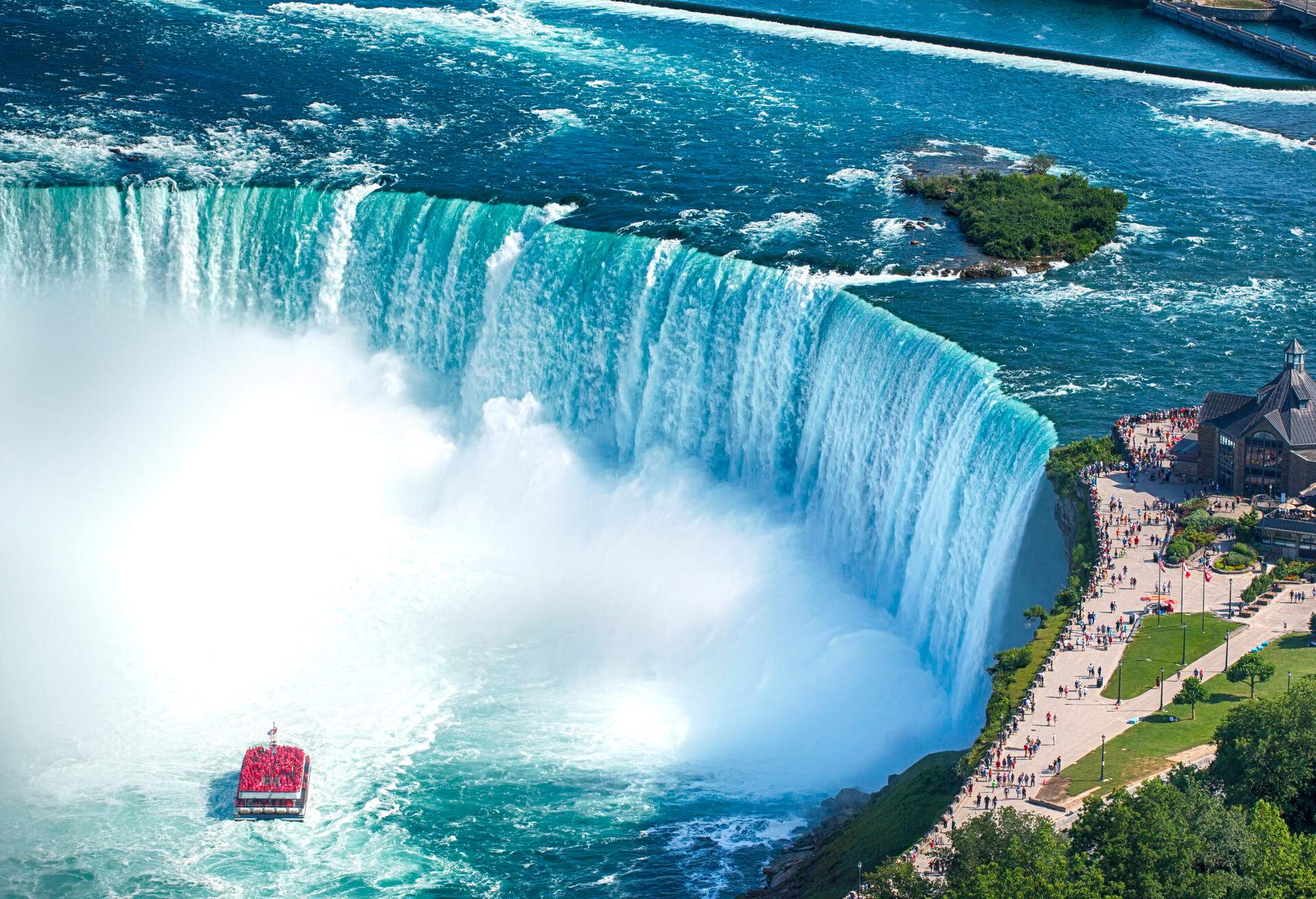
Canada is most famous for Niagara Falls, on the border of the USA, near the city of Toronto. It’s one of the world’s most popular tourist attractions. Della Falls is also well known as the highest in the country, while Helmcken Falls is certainly one of the most beautiful waterfalls in Canada.
How many waterfalls are in Canada?
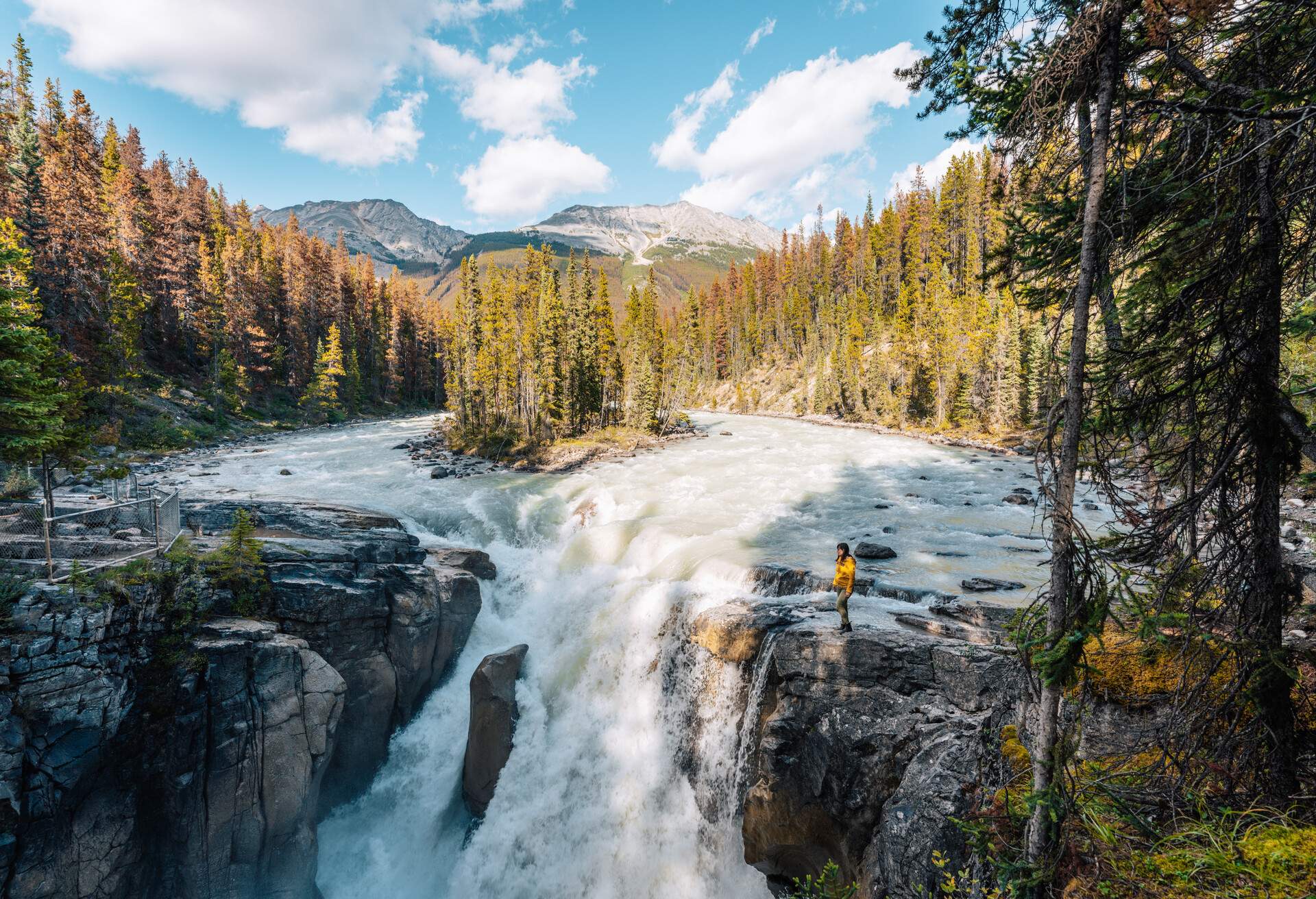
Canada has too many waterfalls to have been officially counted, but so far, around 1,700 have been identified and named. This gives you a ridiculous choice, and if you’re an aficionado, it promises the prospect of many return visits.
What are the biggest waterfalls in Canada?
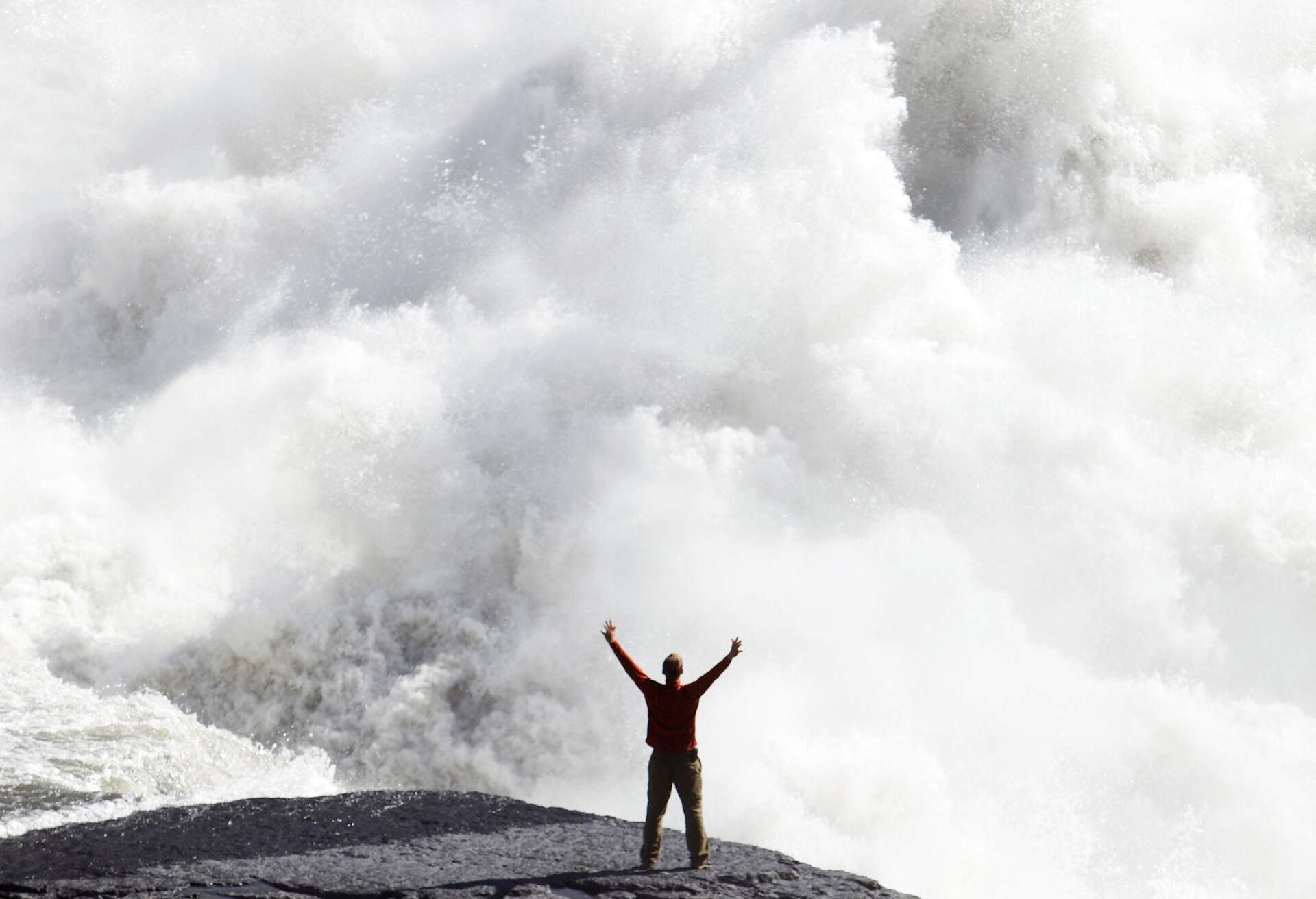
One can define the biggest waterfalls in Canada in two ways – by breadth or by height. Niagara Falls is the widest of them all by a long way, measuring roughly 671 metres (about 2,200 feet) at its broadest point. If you’re looking for the highest waterfalls in Canada, number one is Della Falls on Vancouver Island, followed by Takakkaw Falls.
More ideas for travelling nature lovers
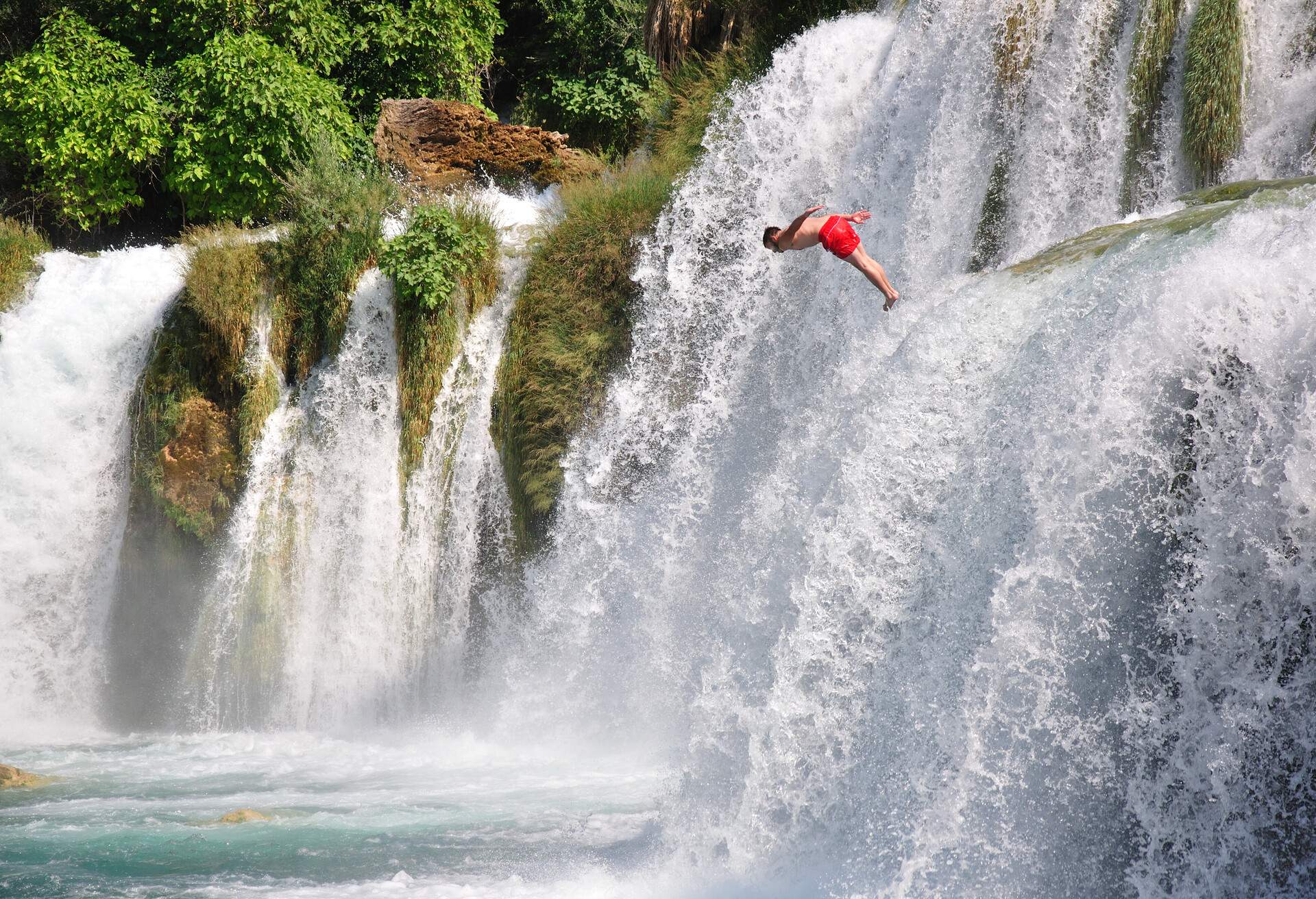
If you’re a big fan of waterfalls, we have more tips for you. Read our guide to the waterfalls in Croatia, or stay right at home and visit some of the best waterfalls in the UK. You can also discover the best places to go wild swimming in the UK or choose some sightseeing destinations among the natural attractions in the UK.
